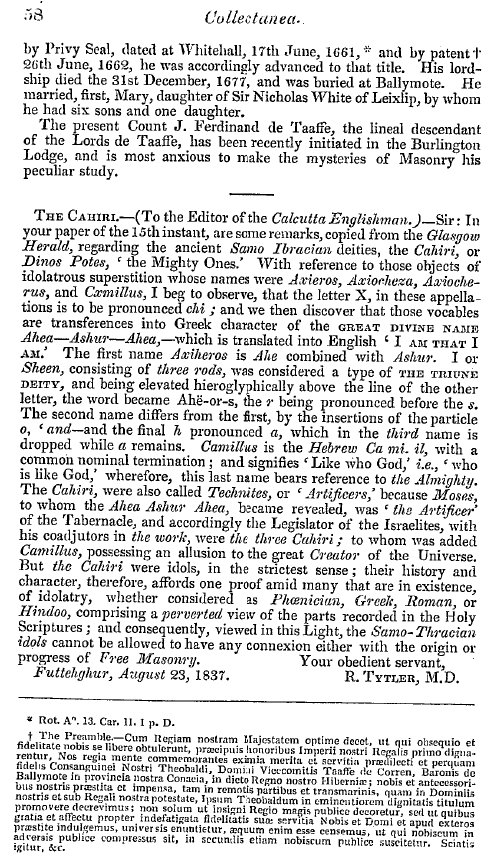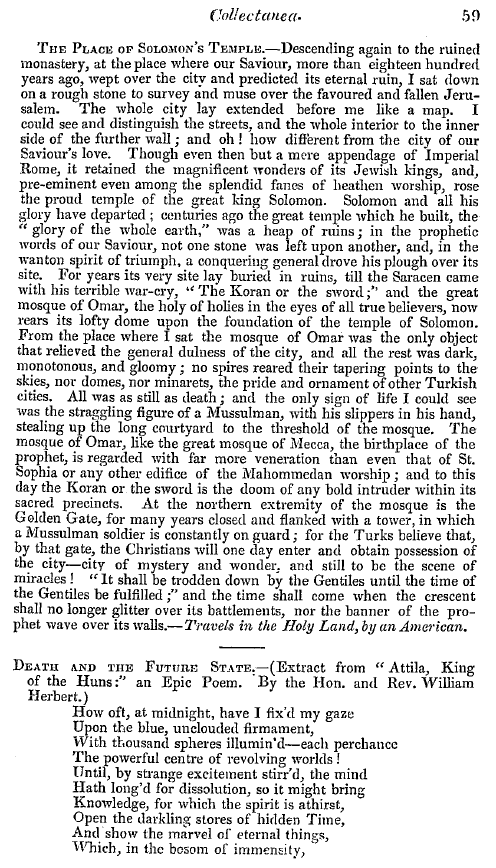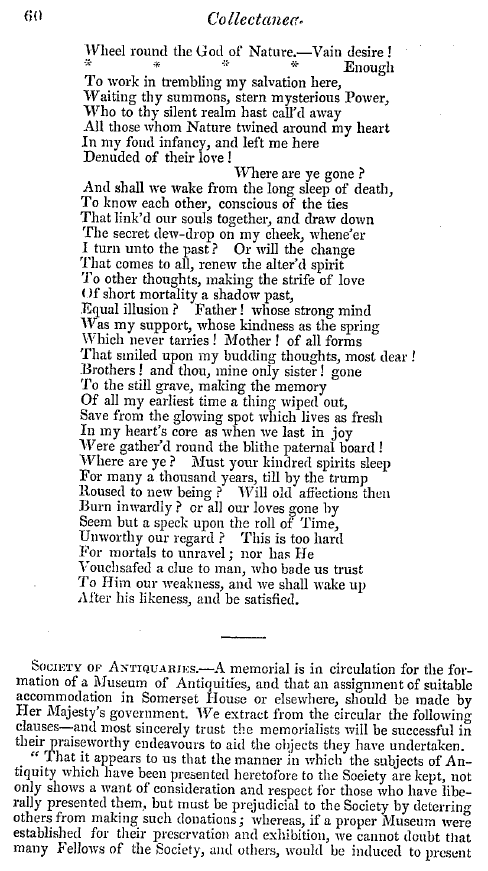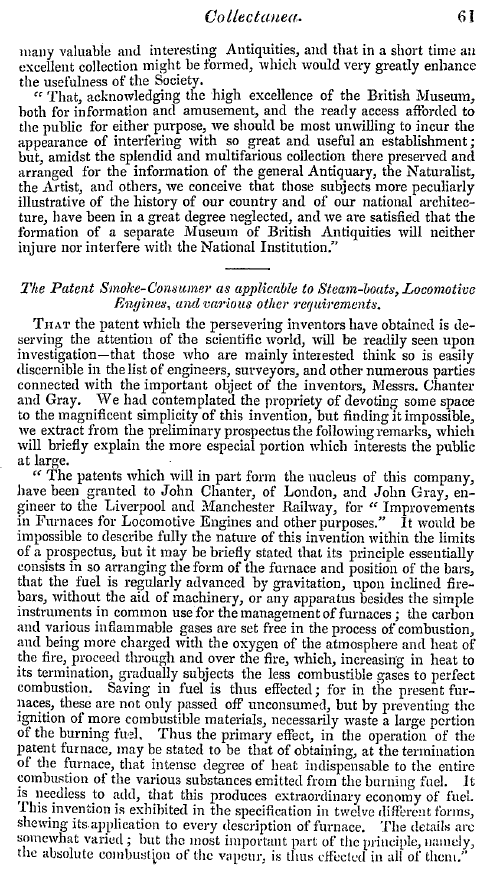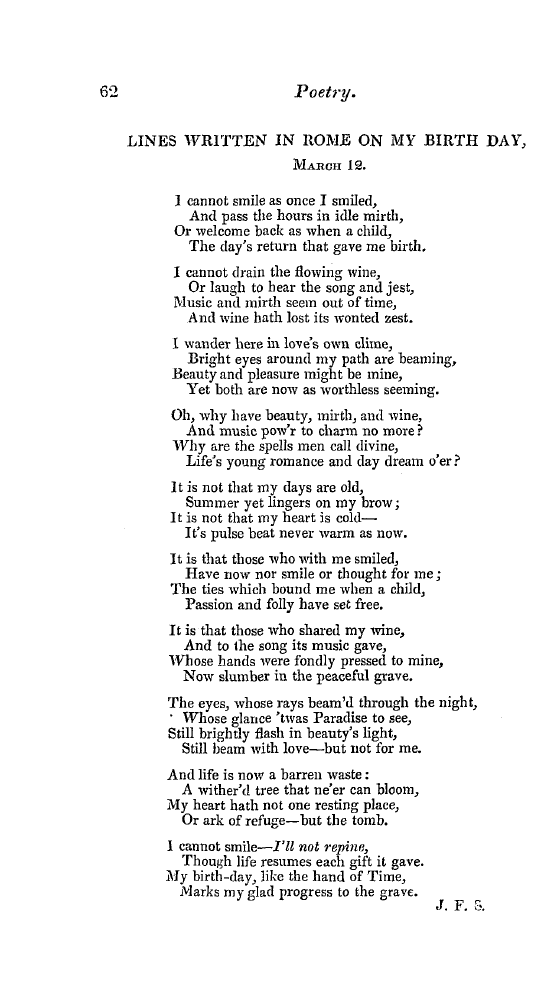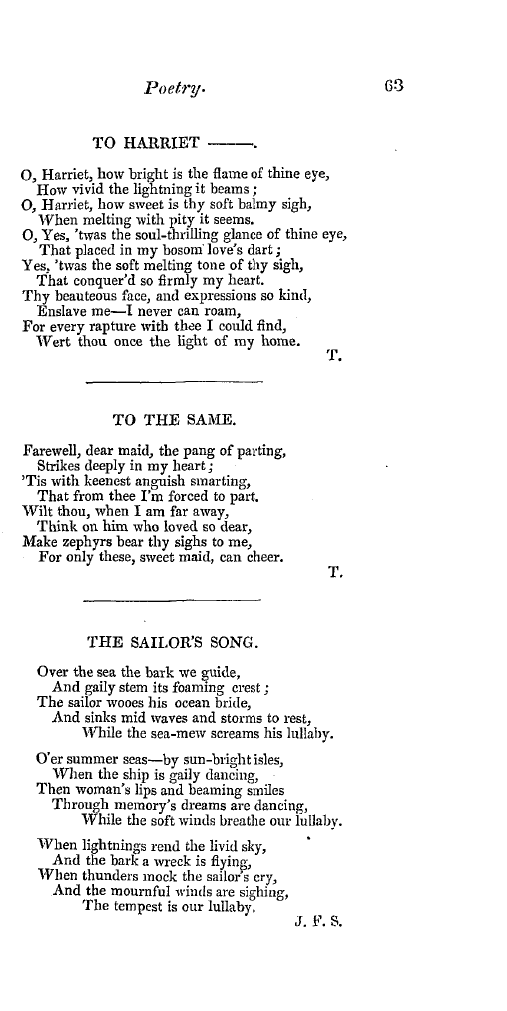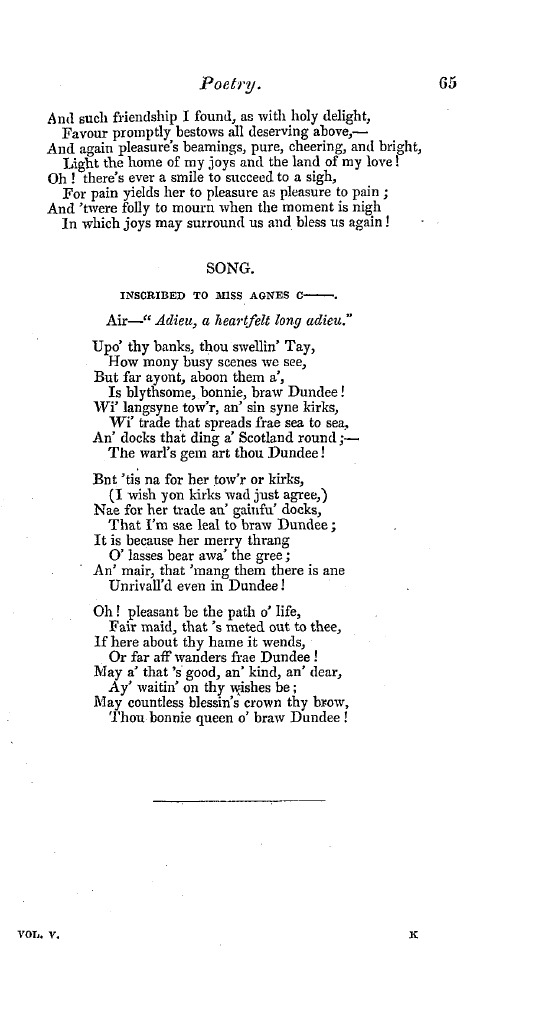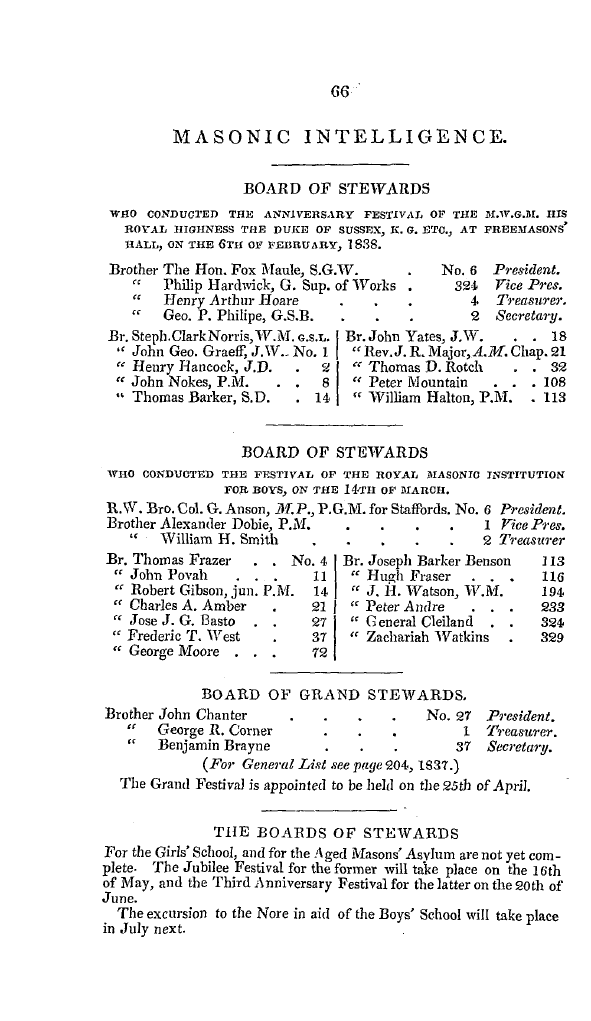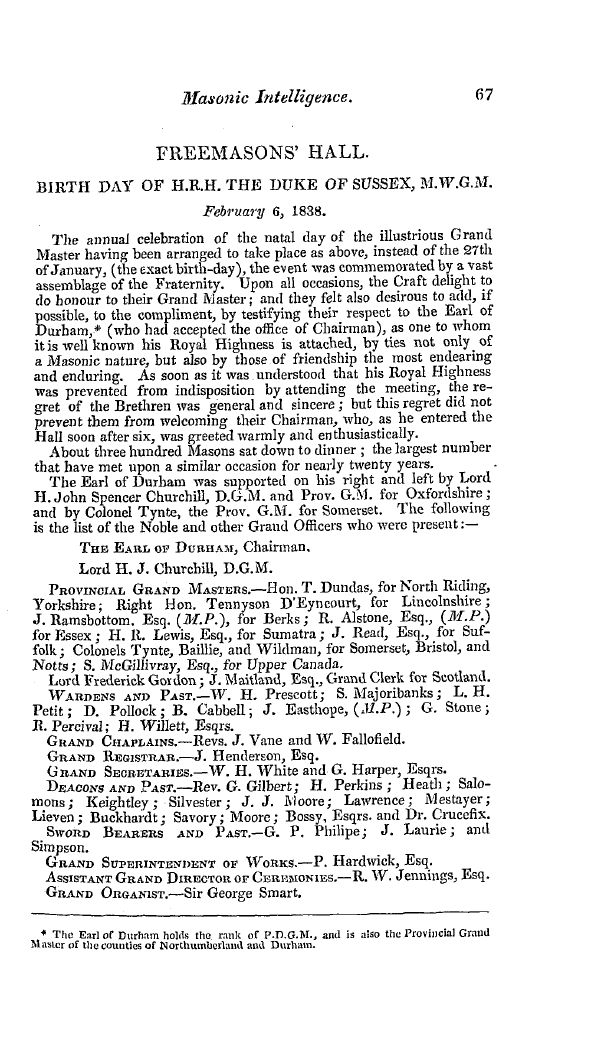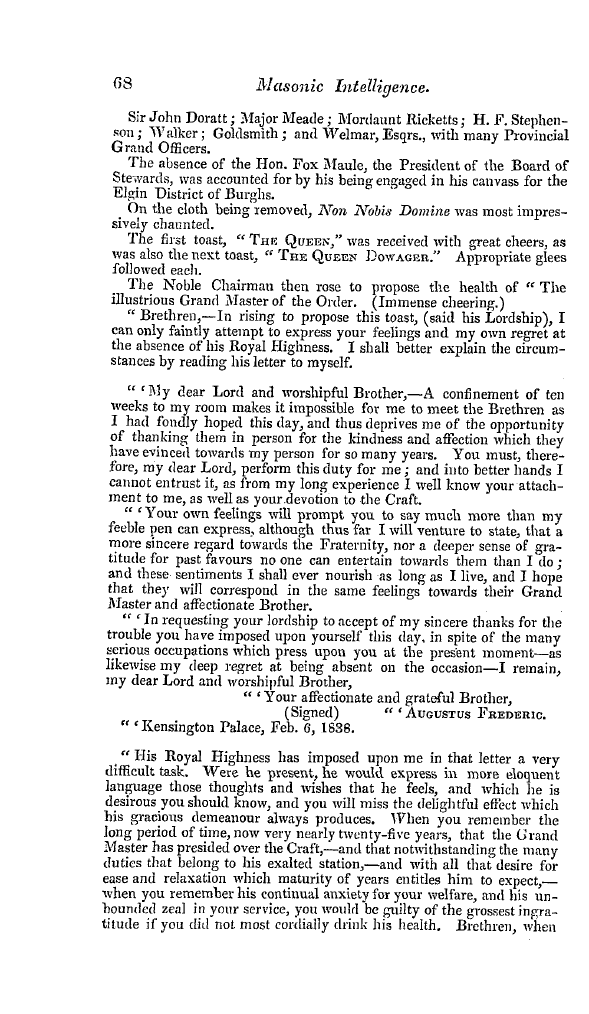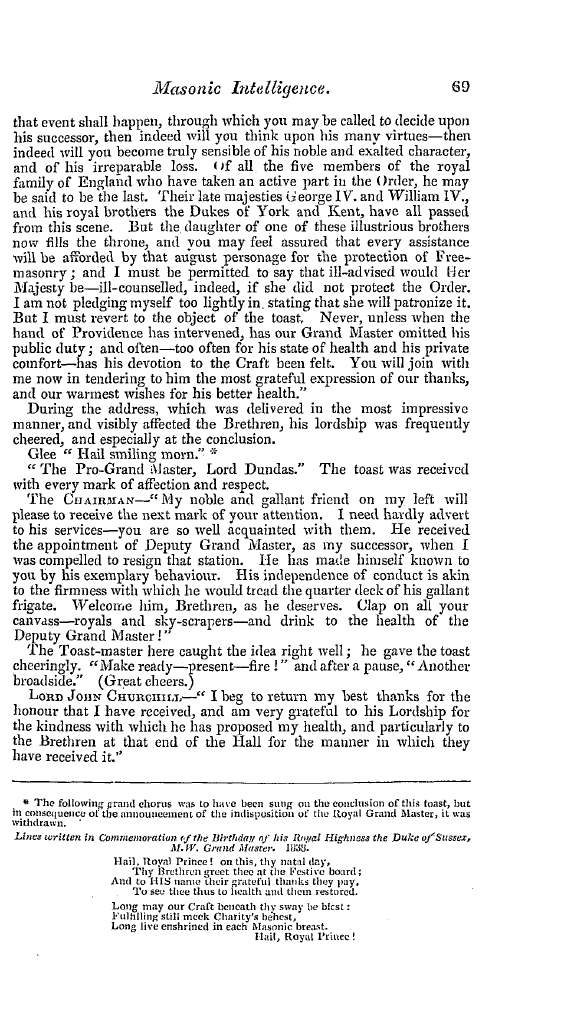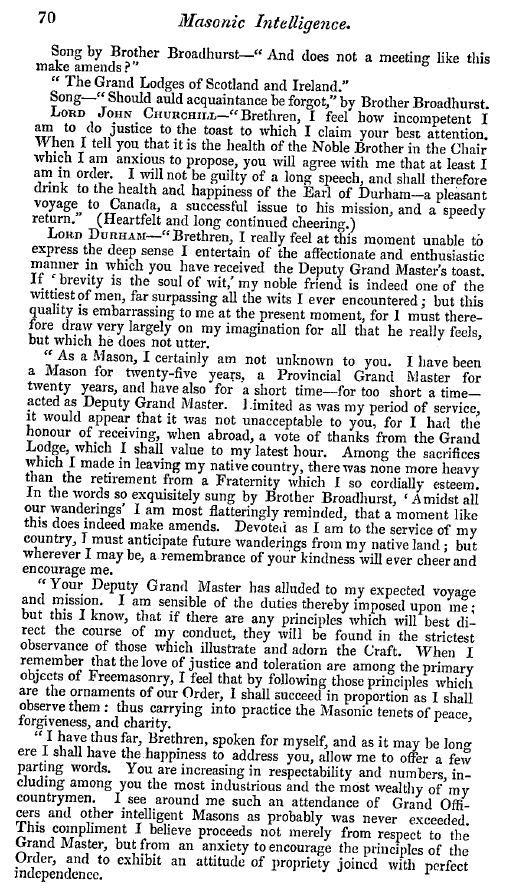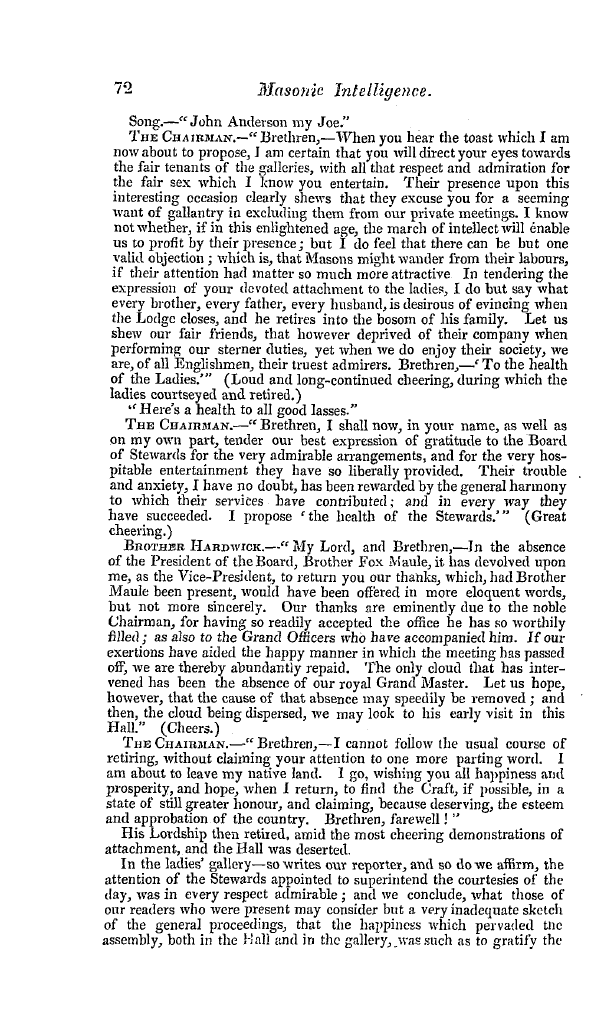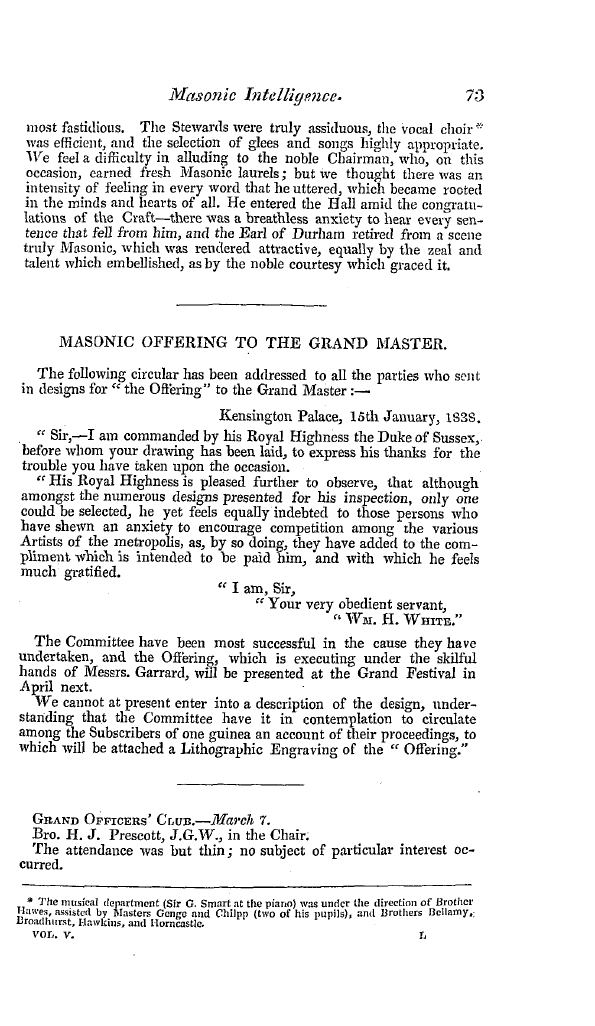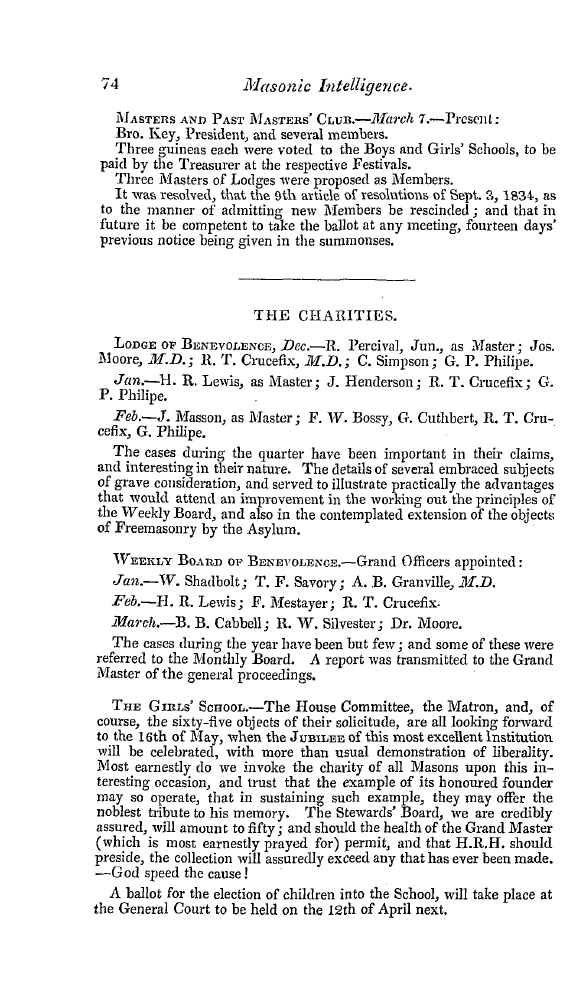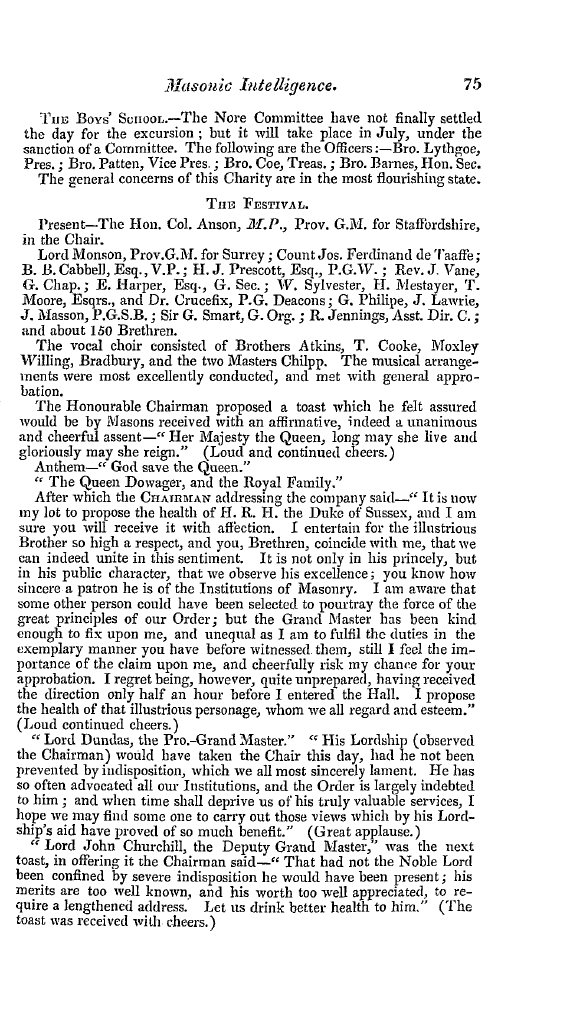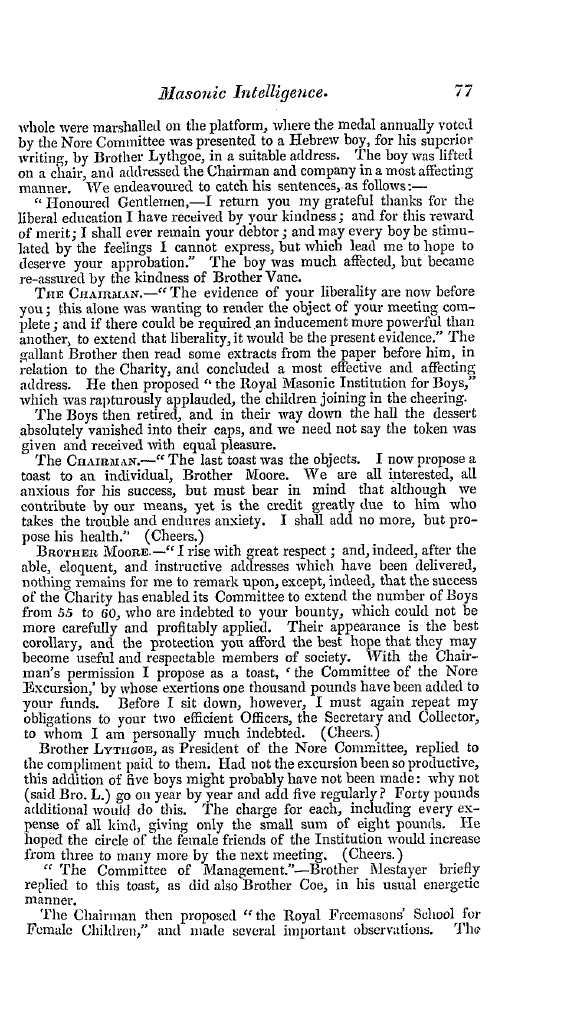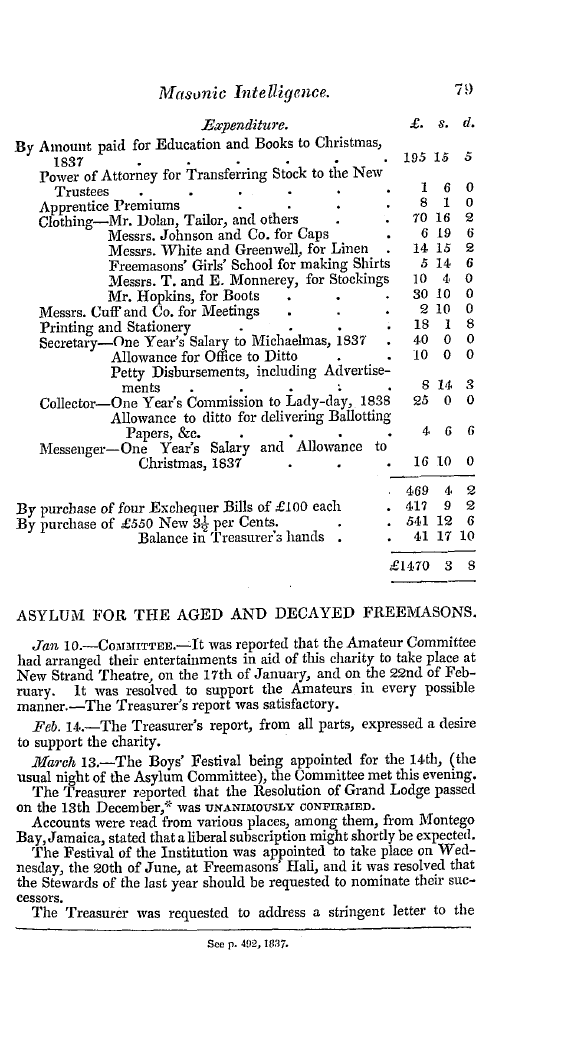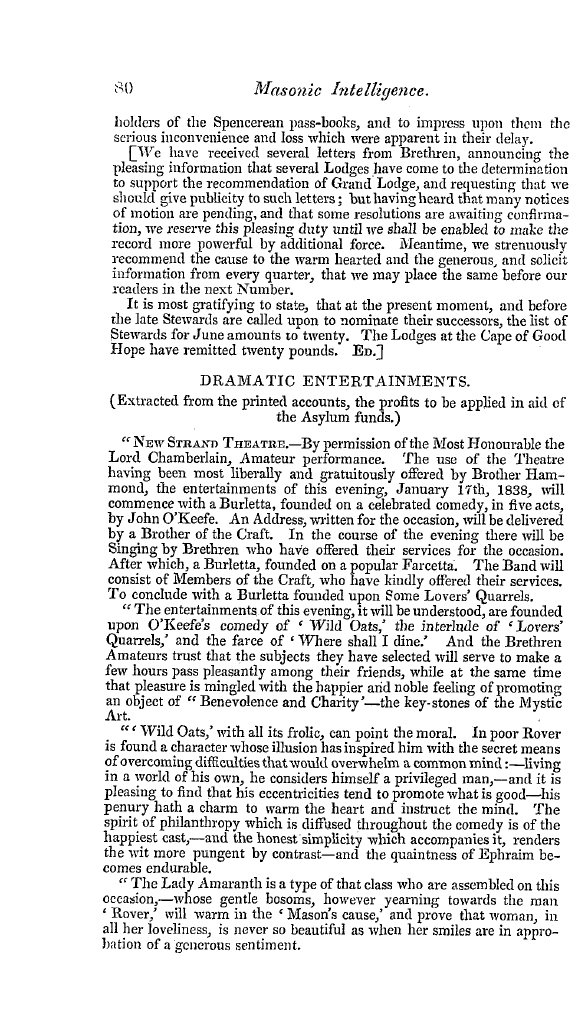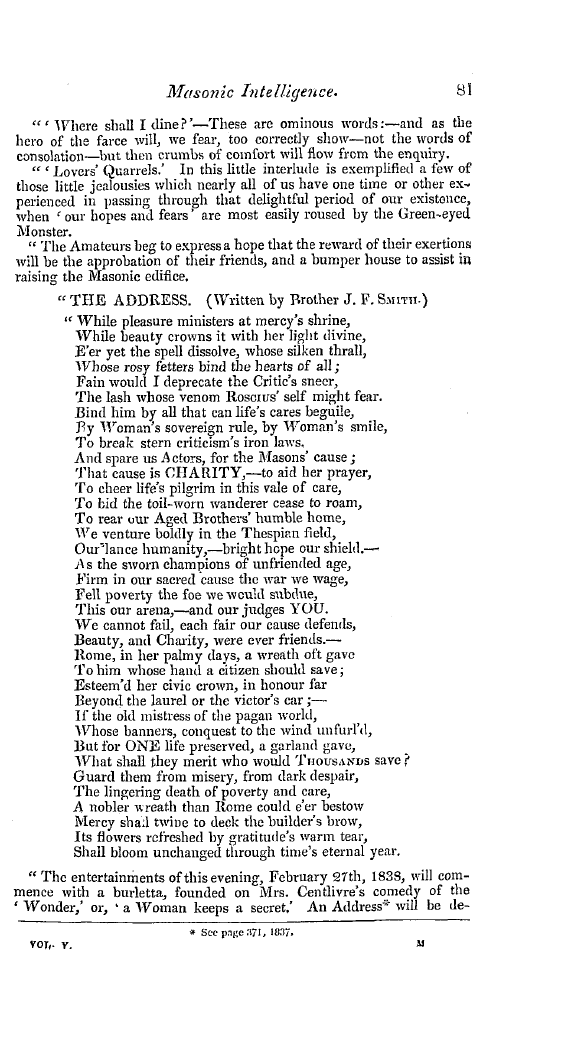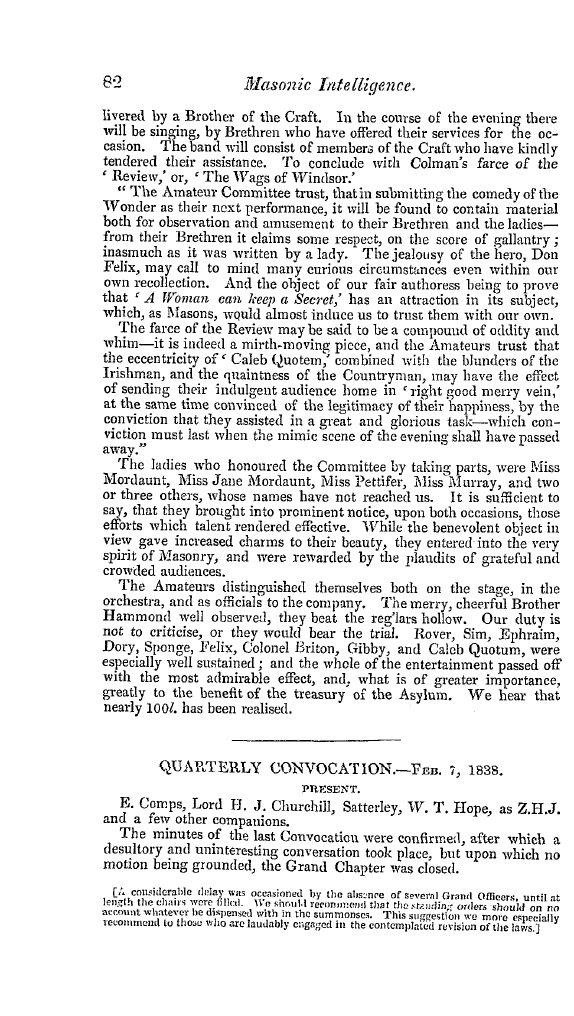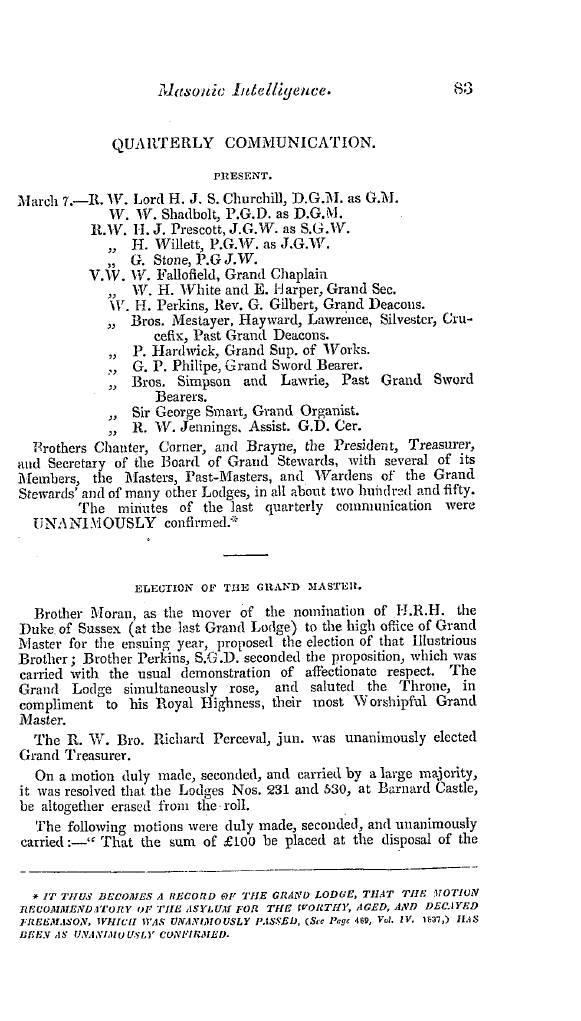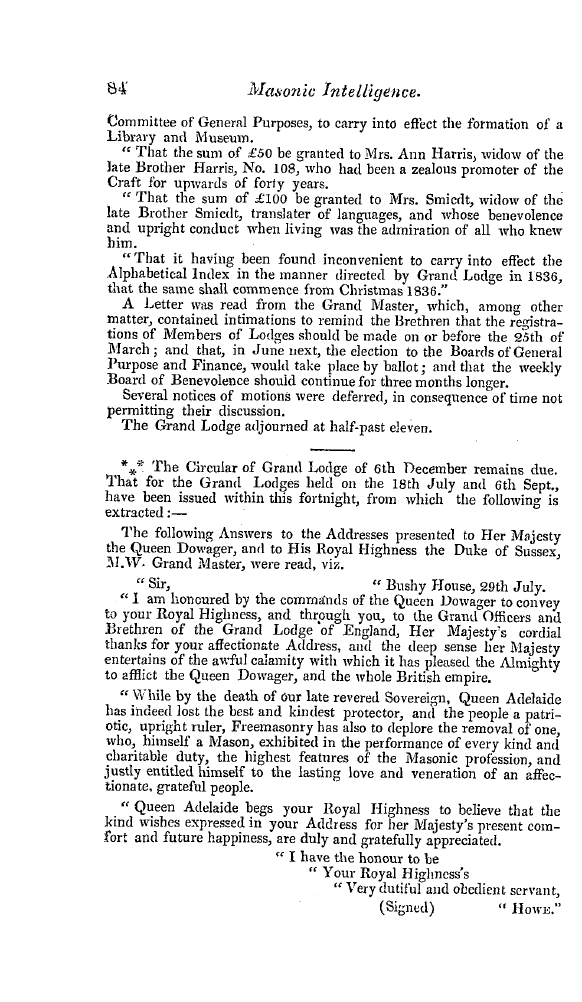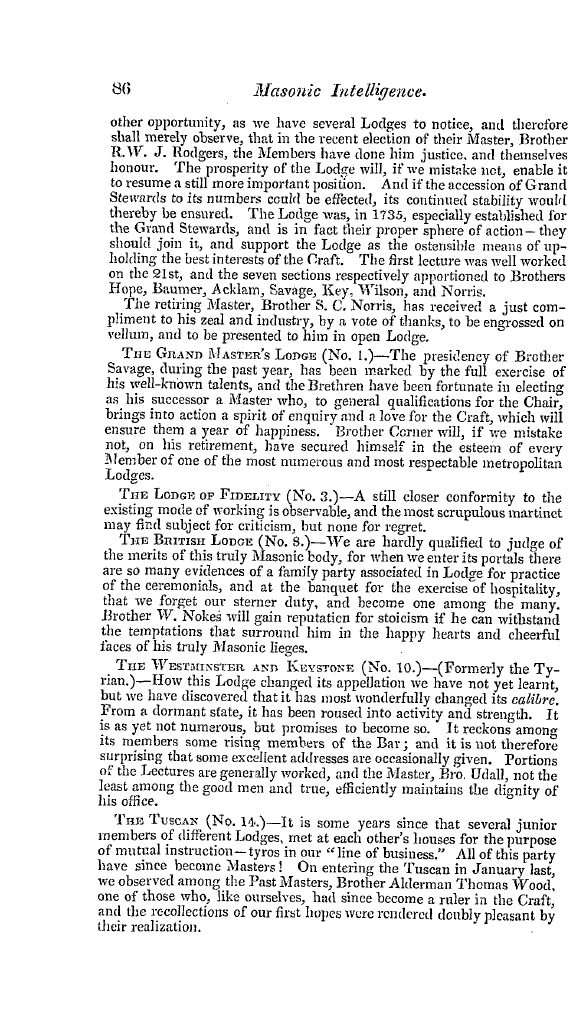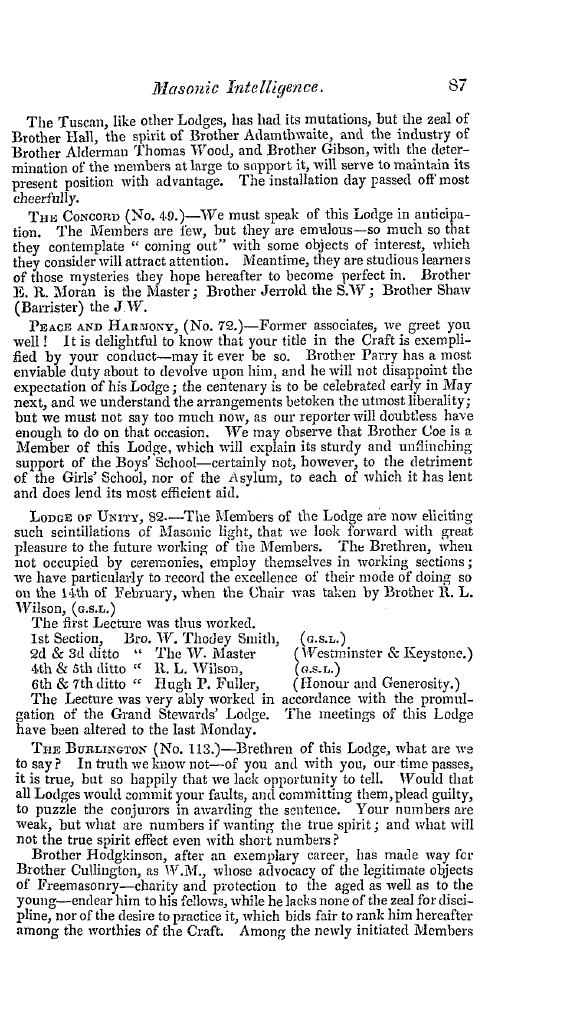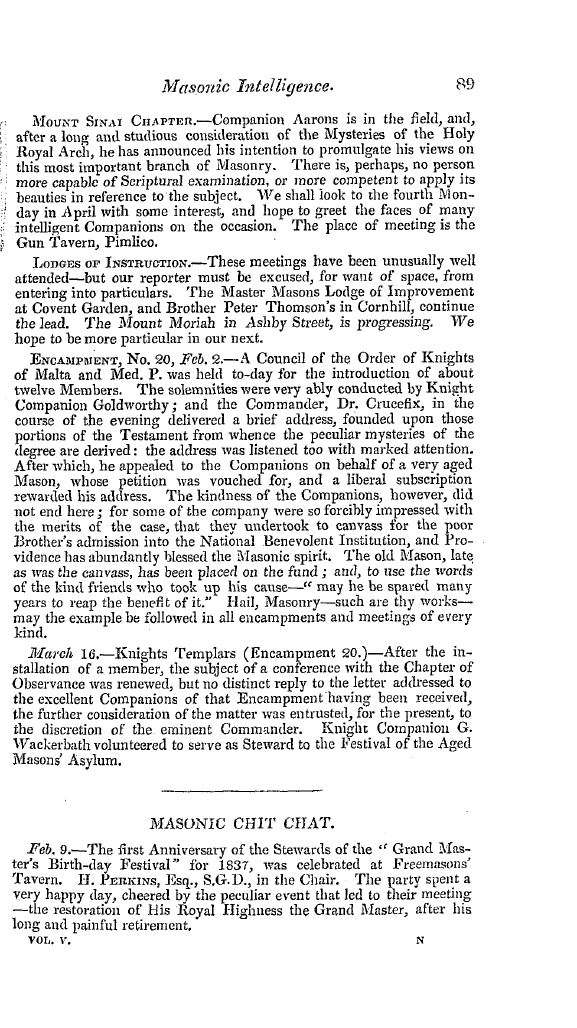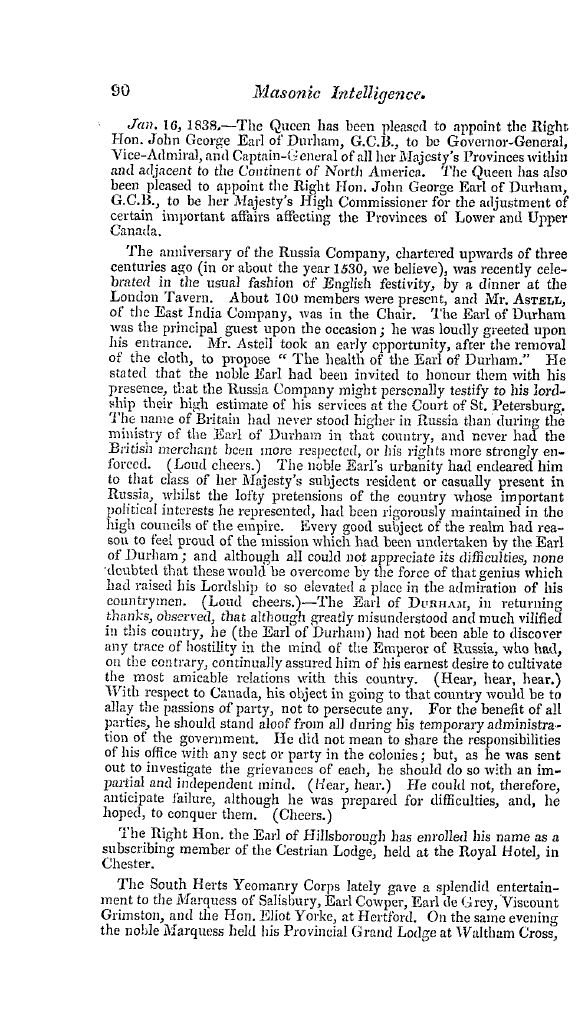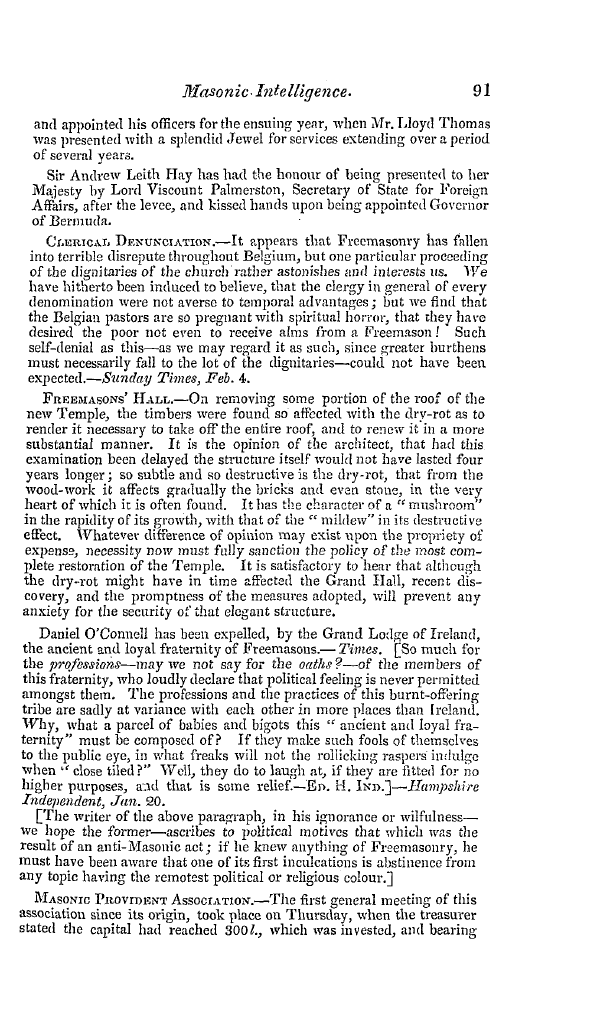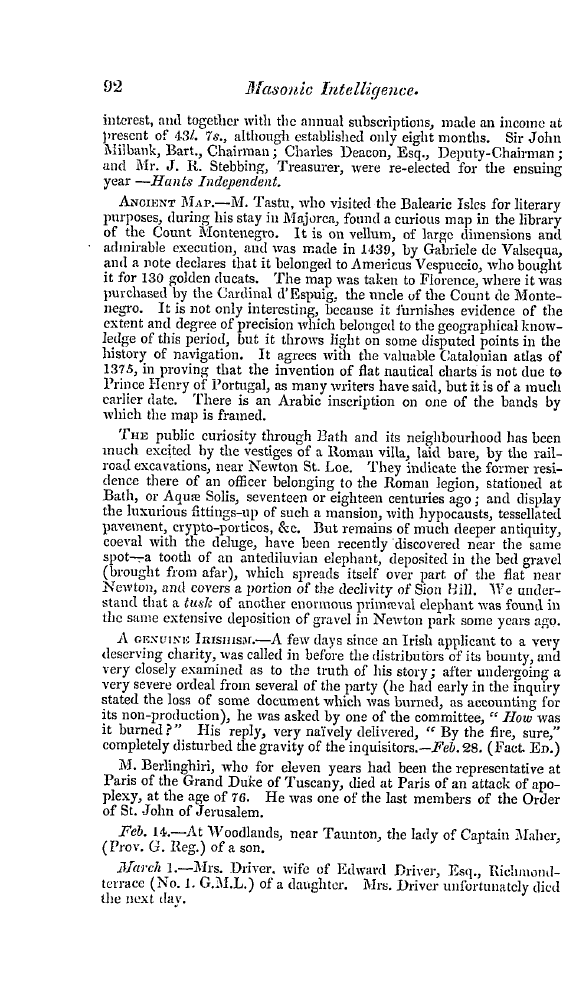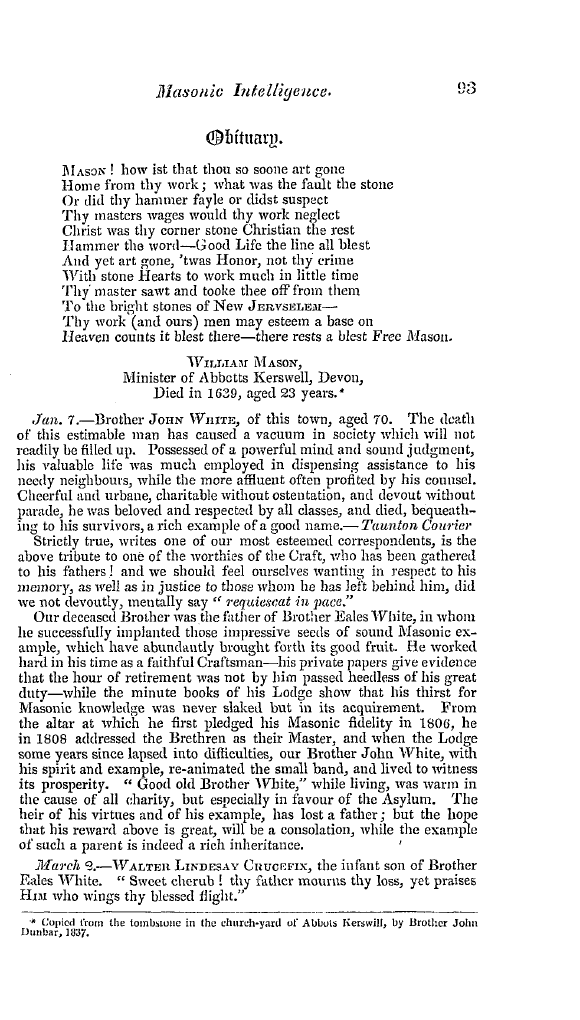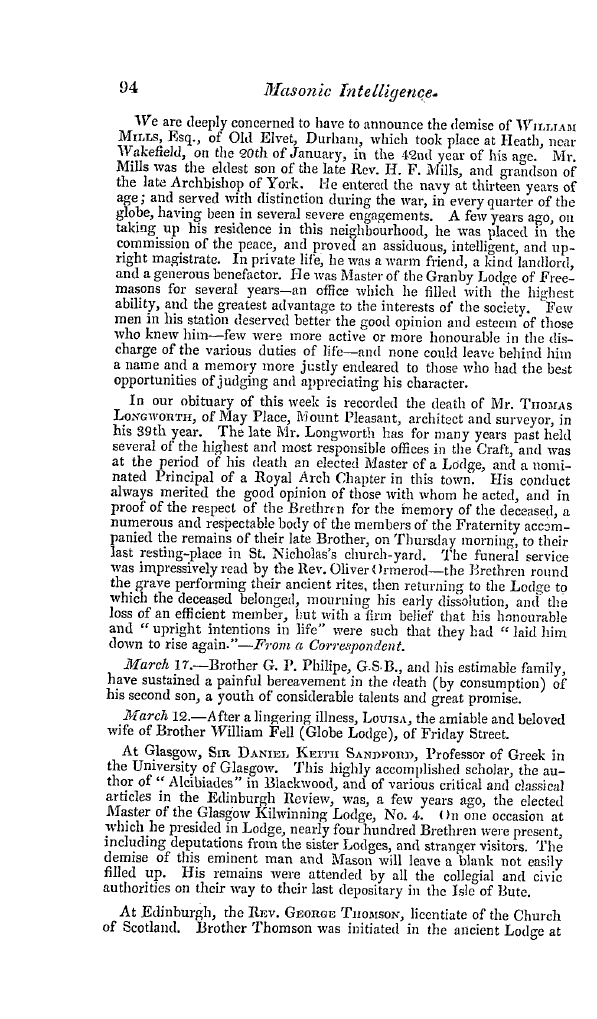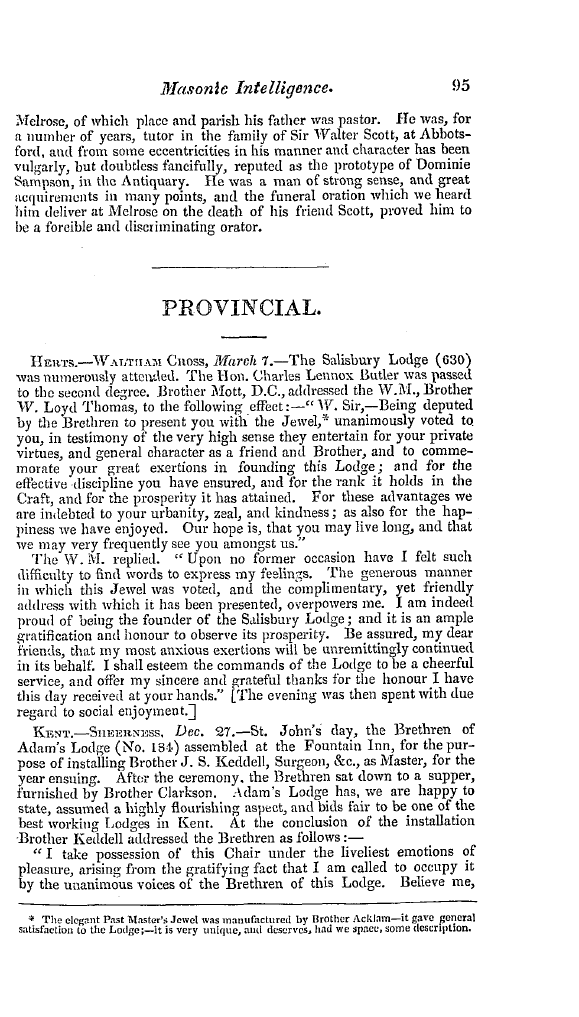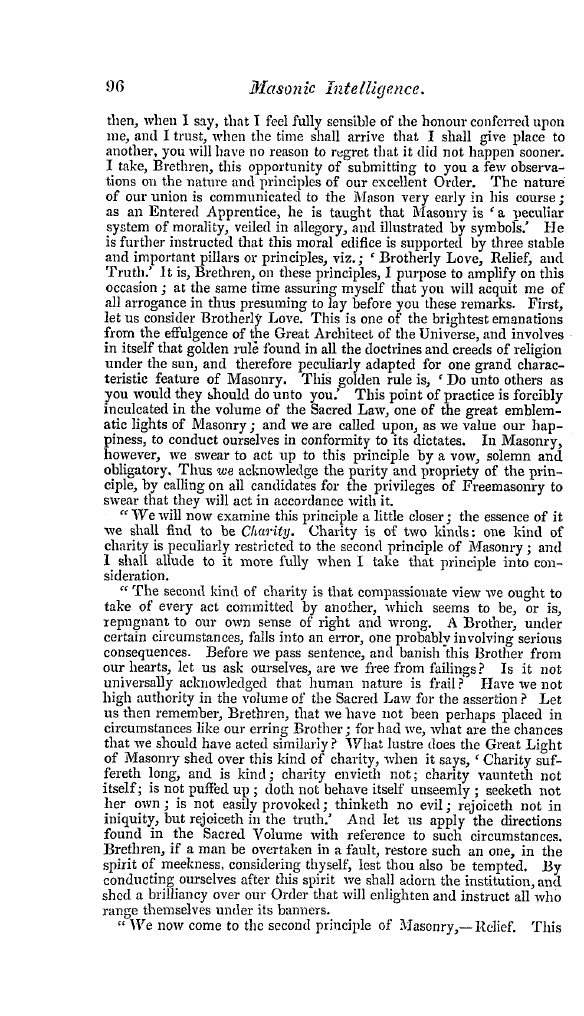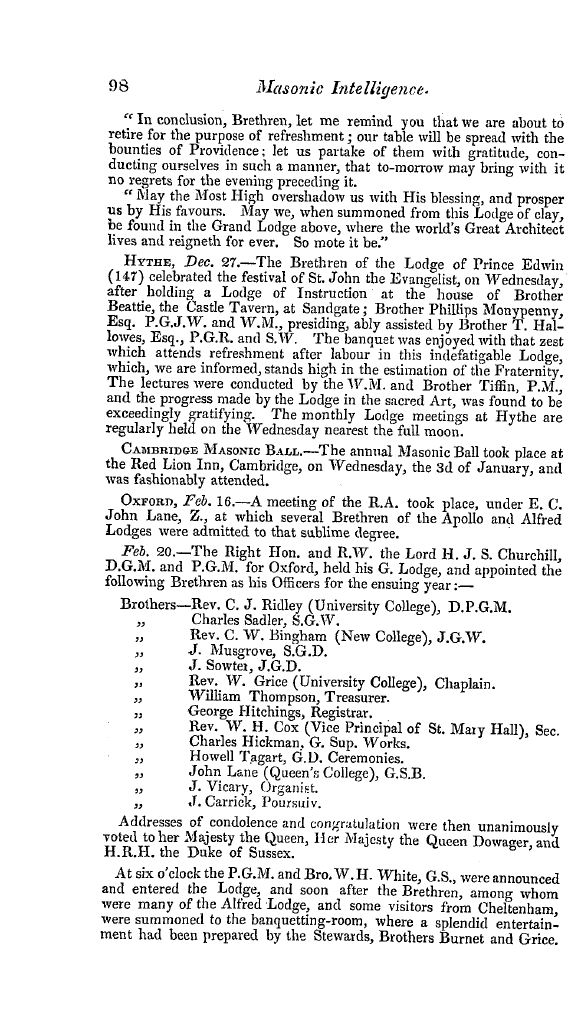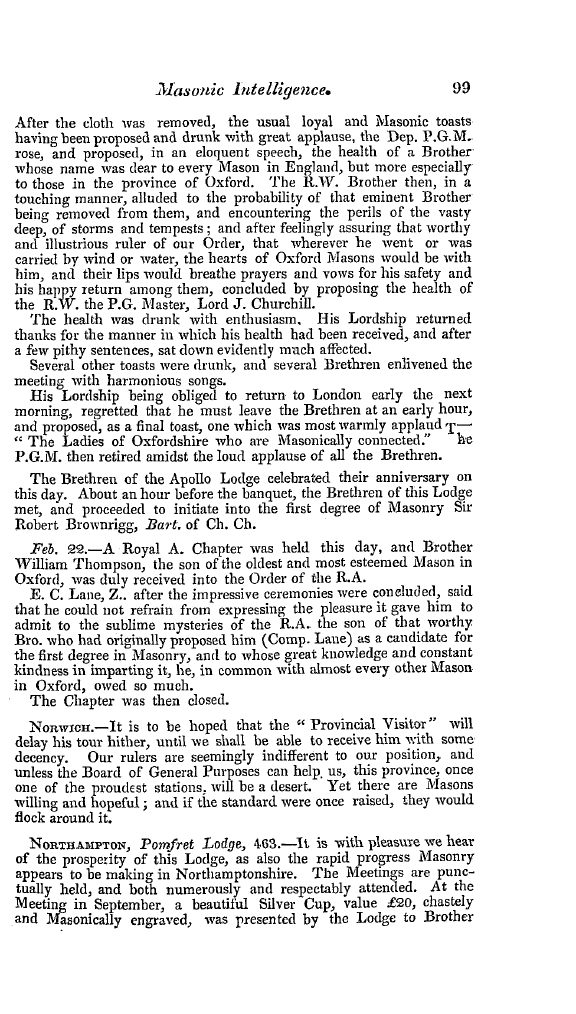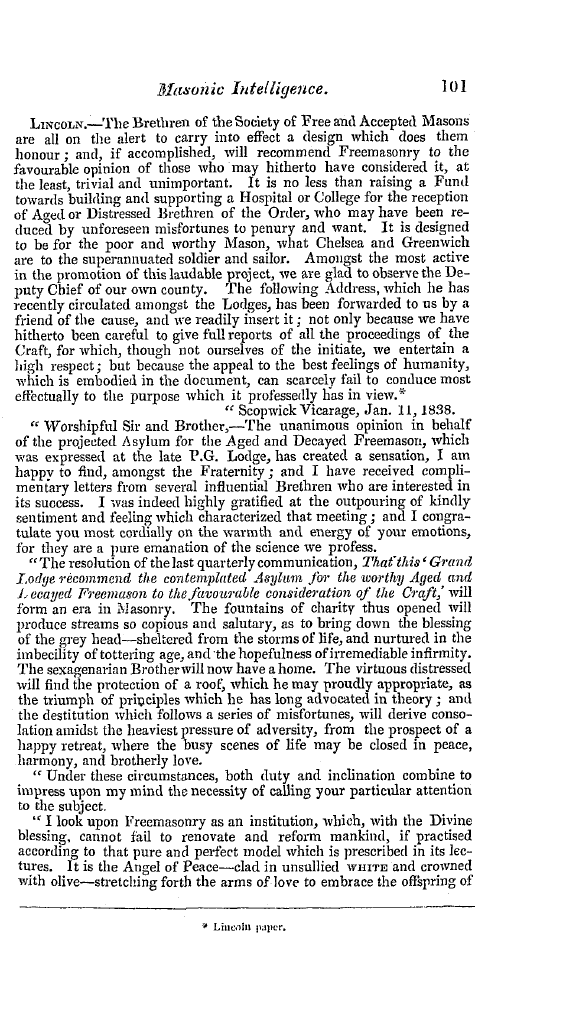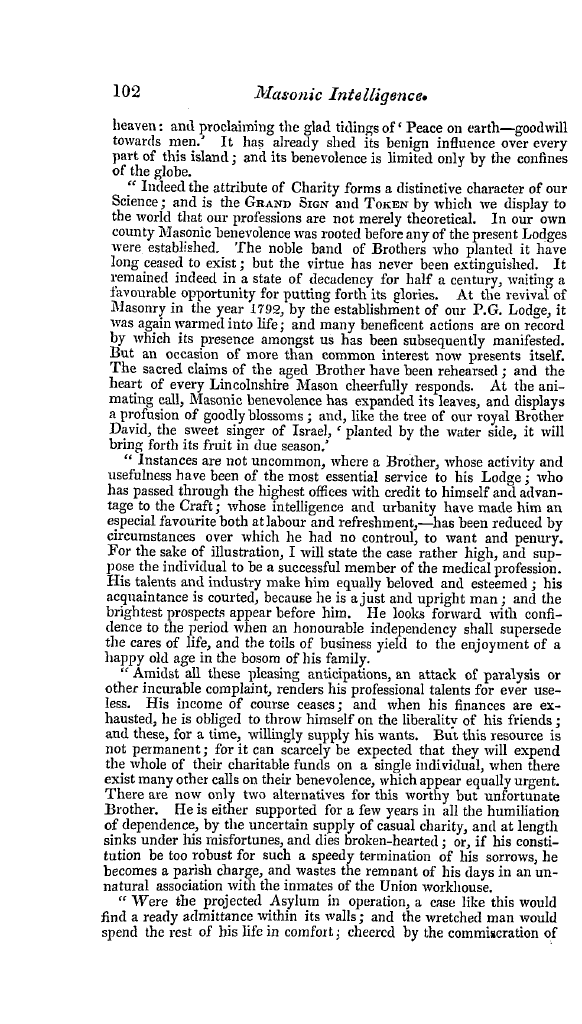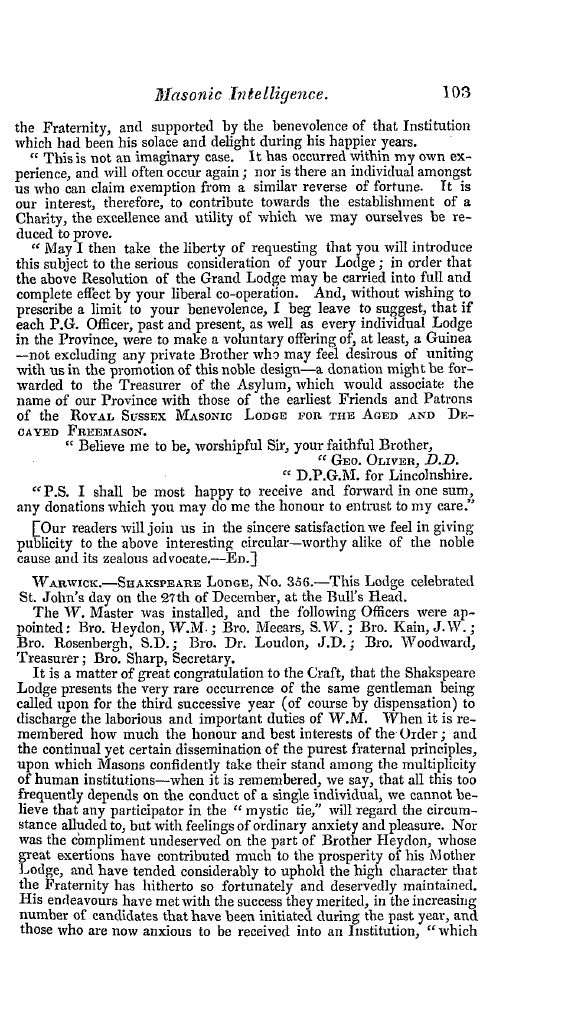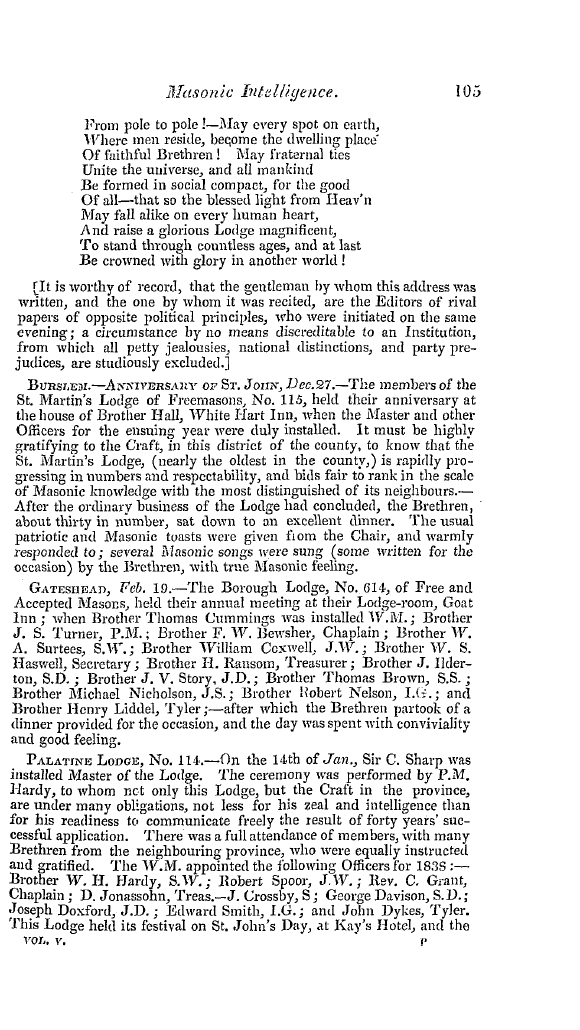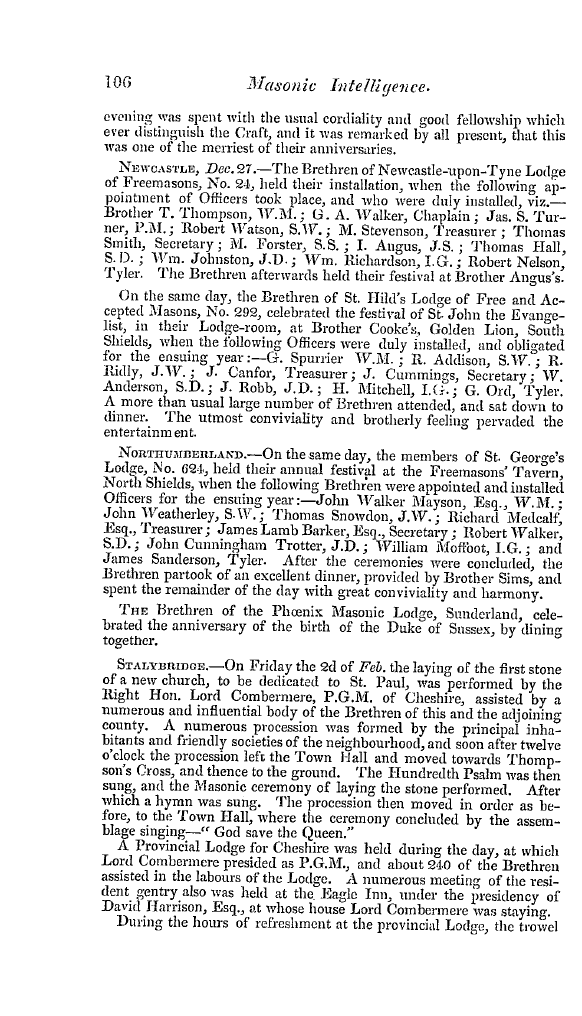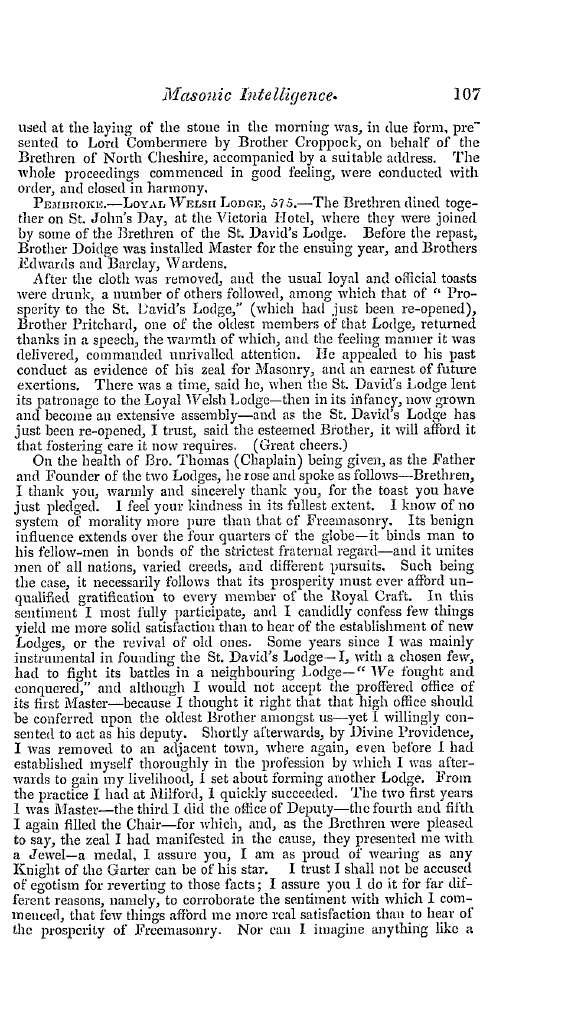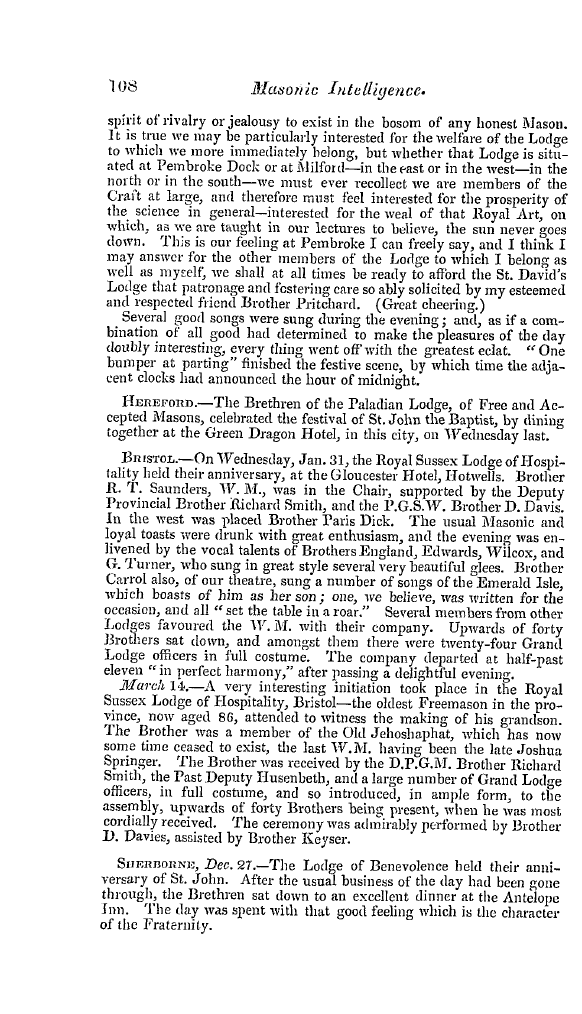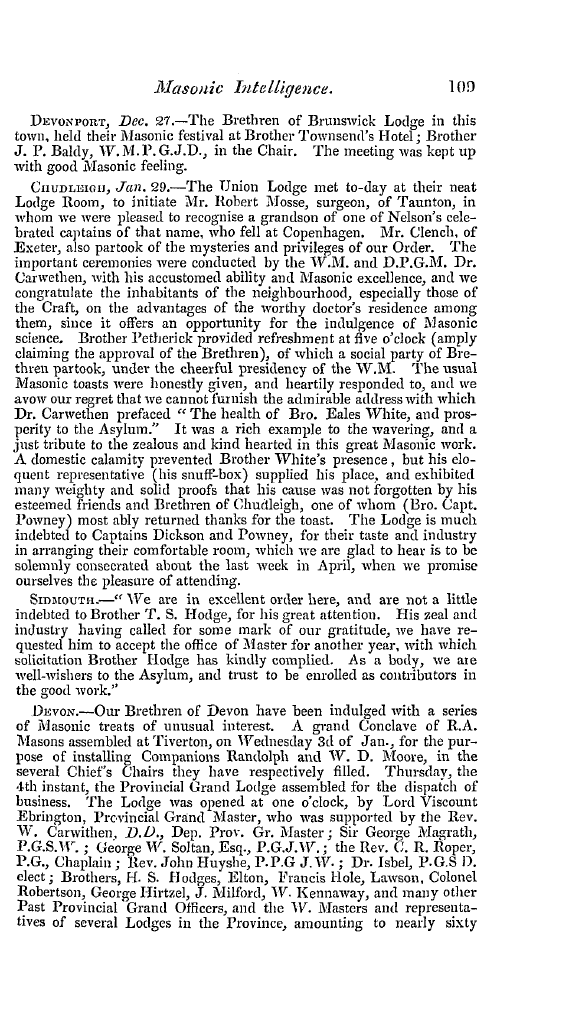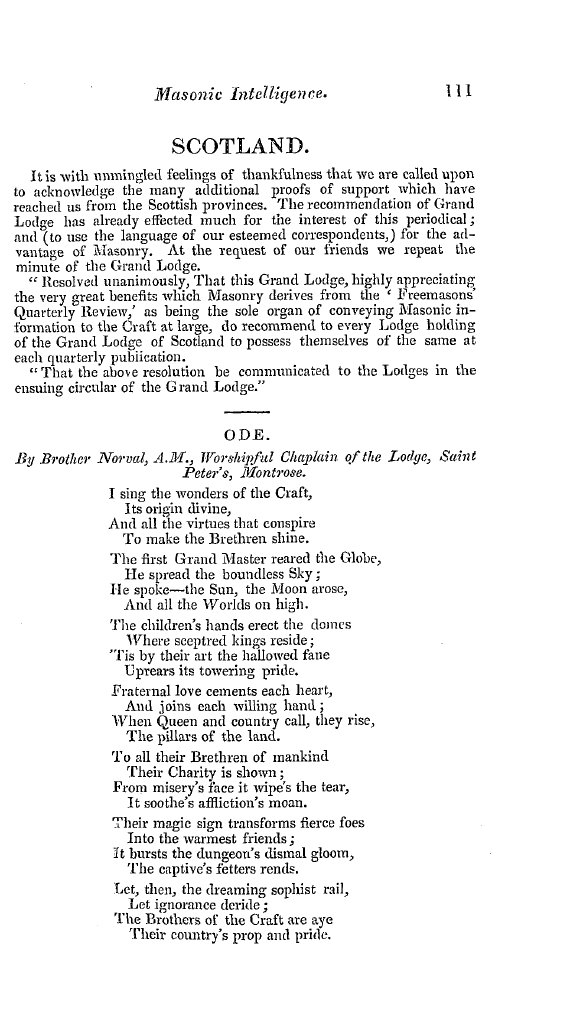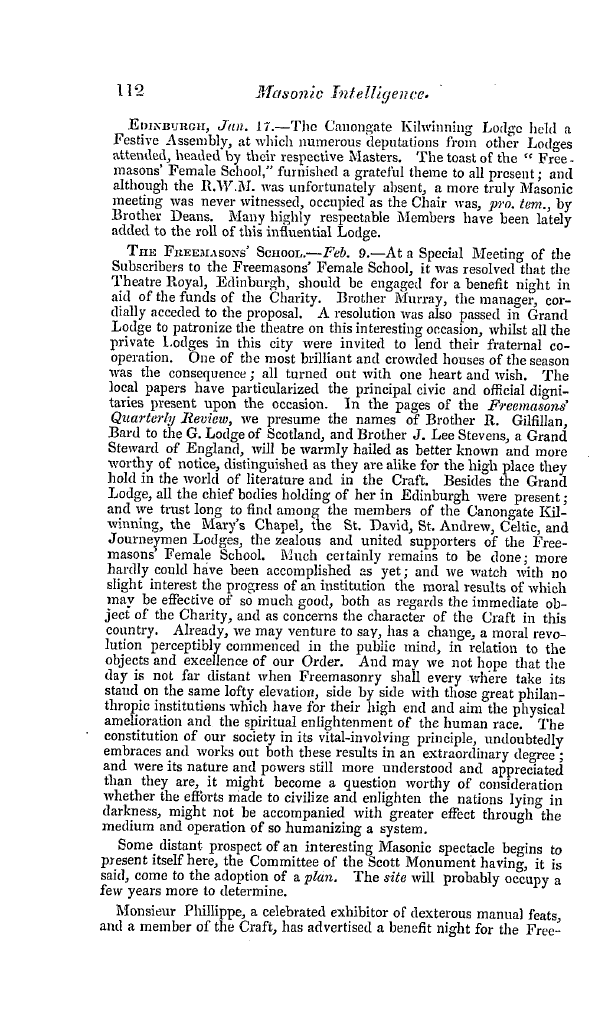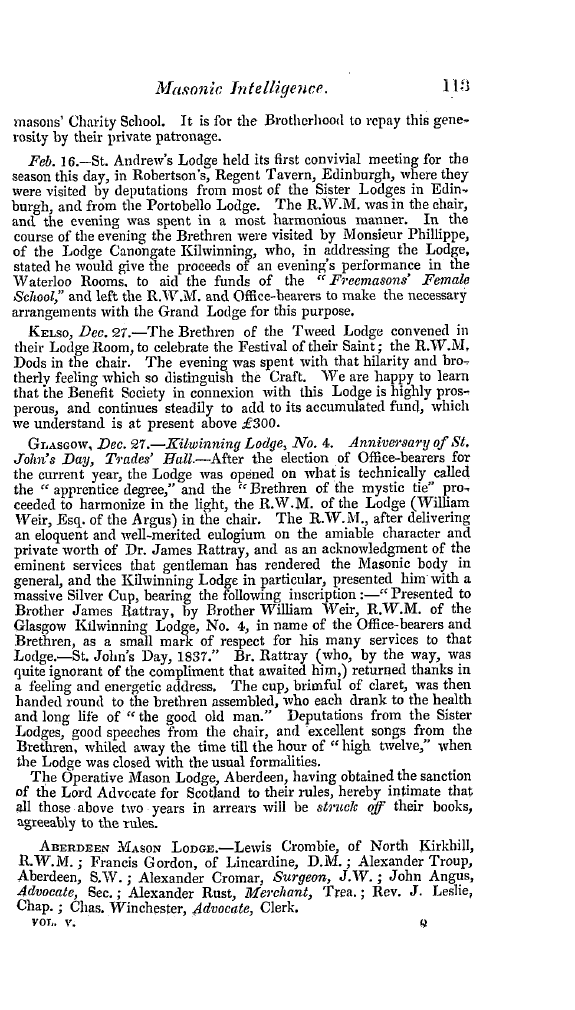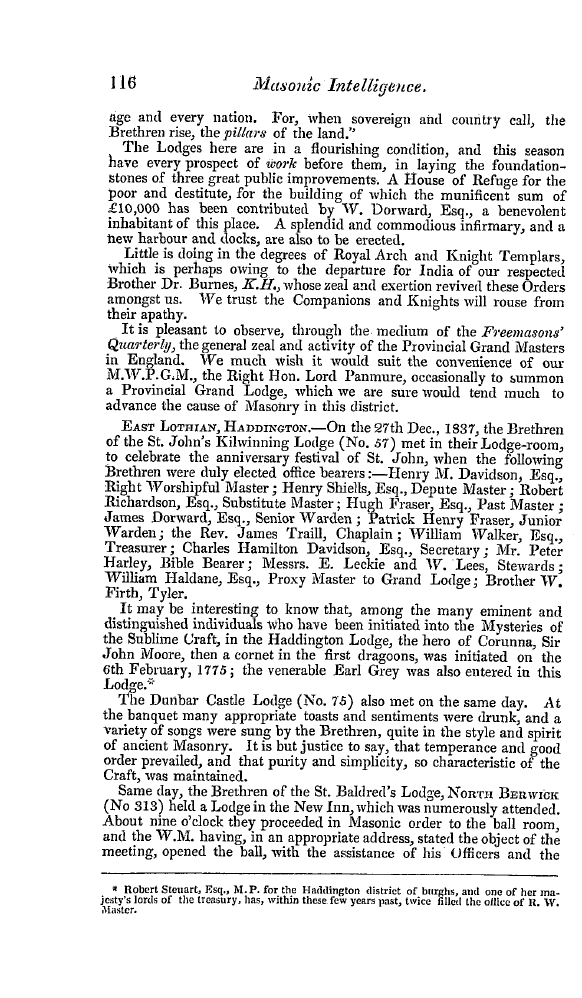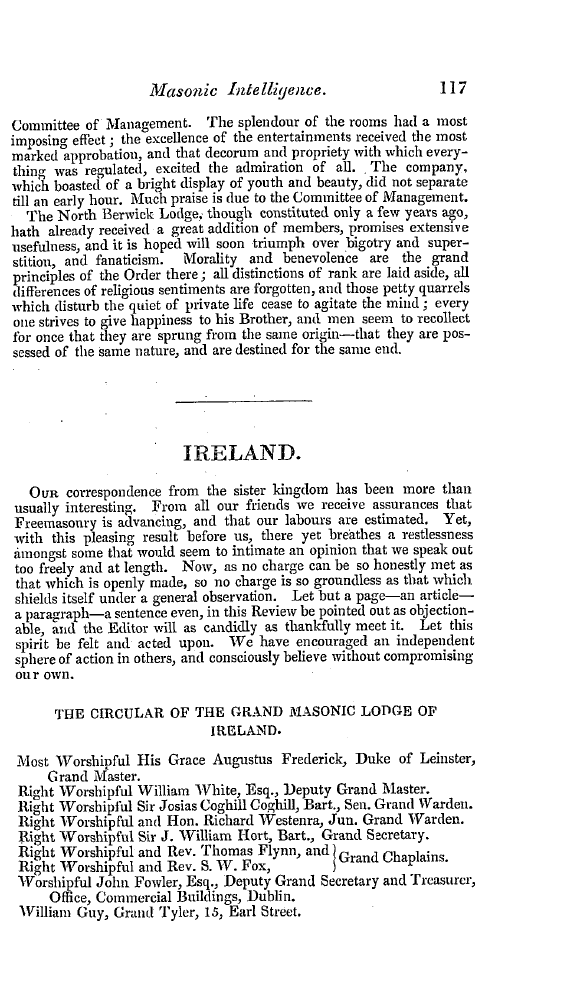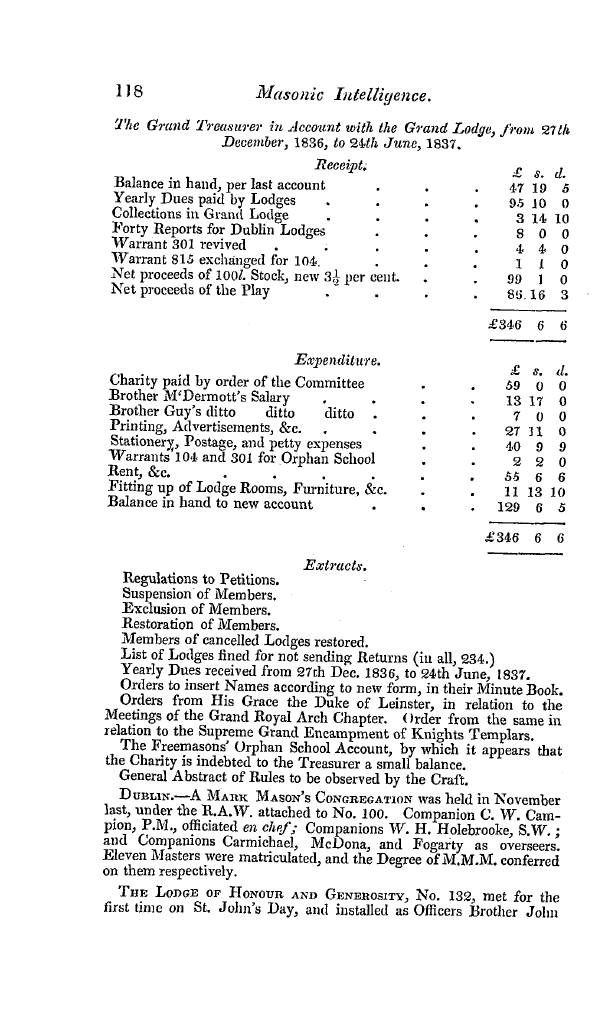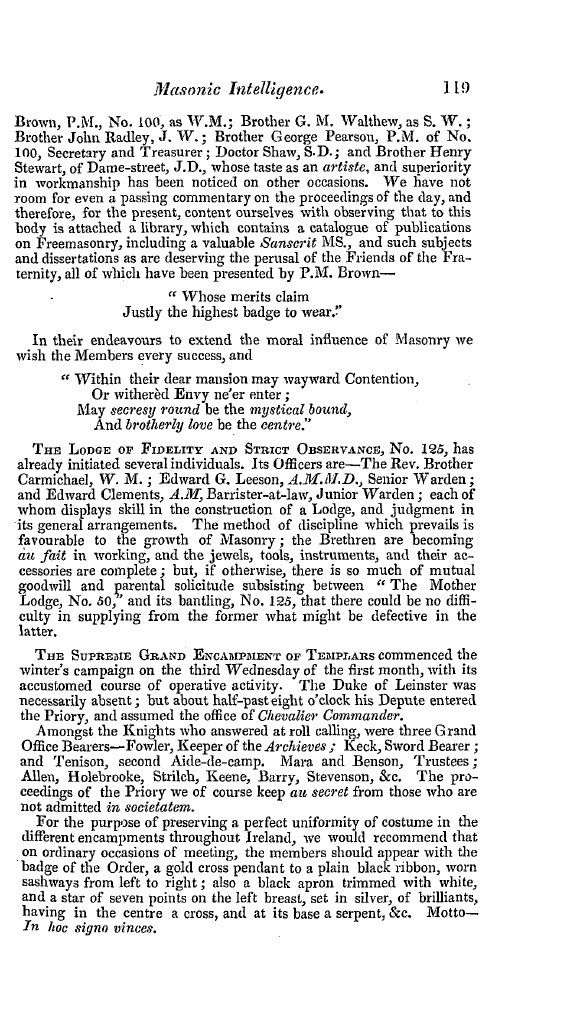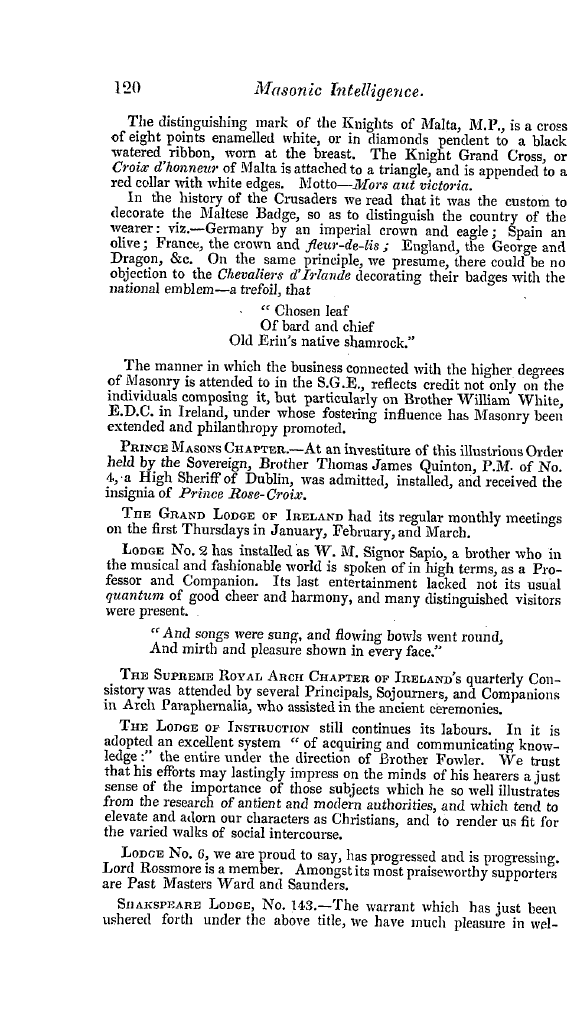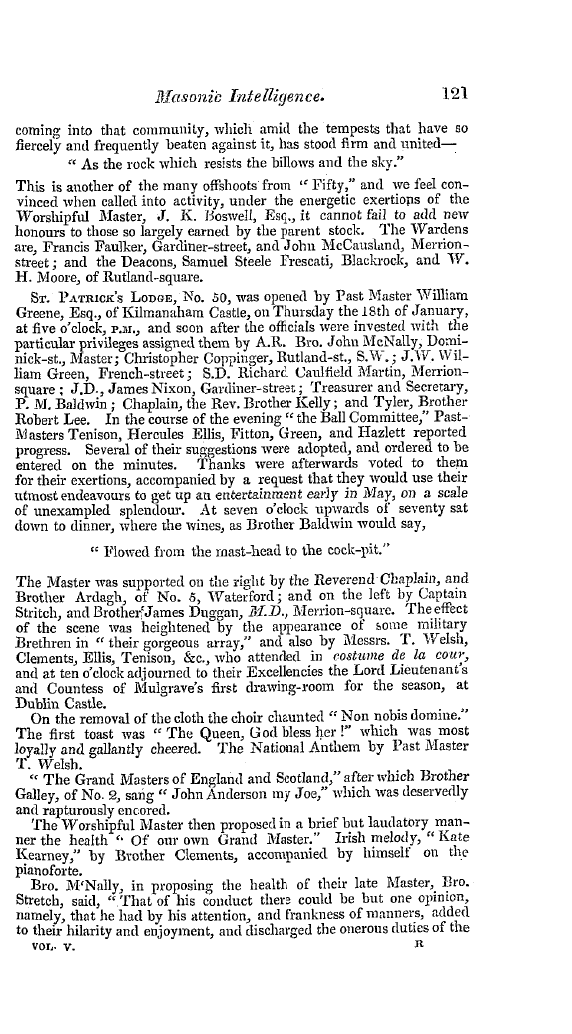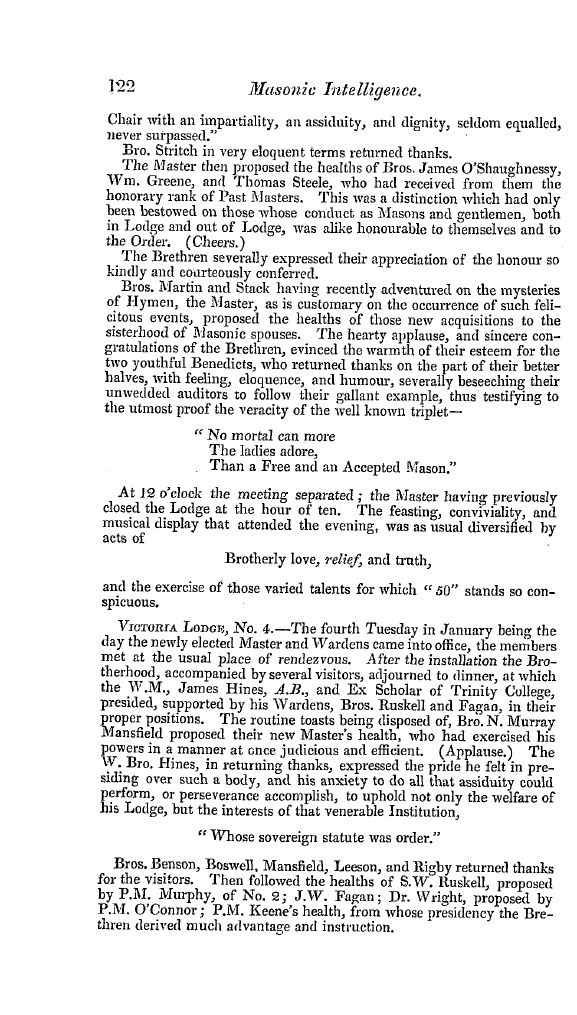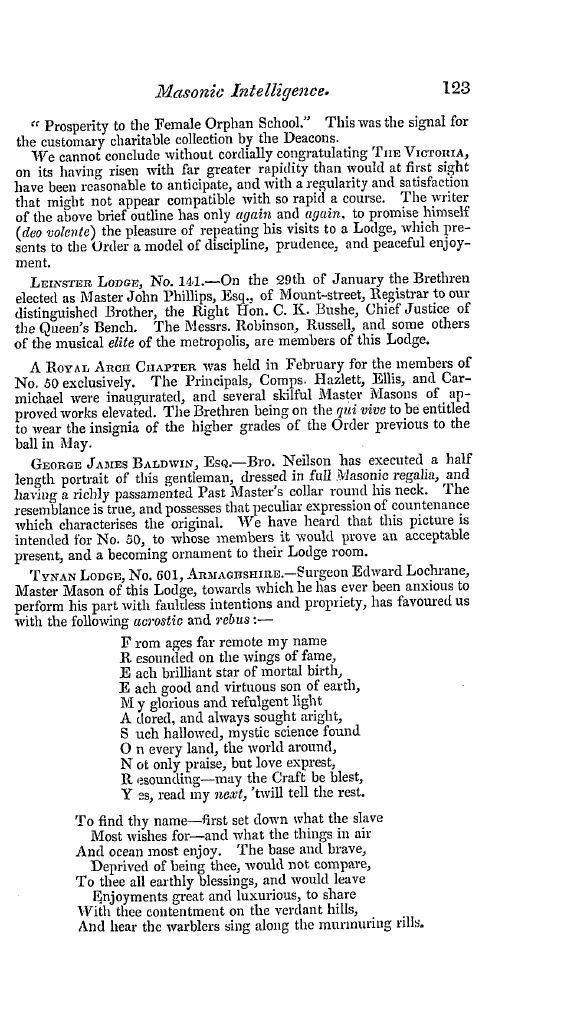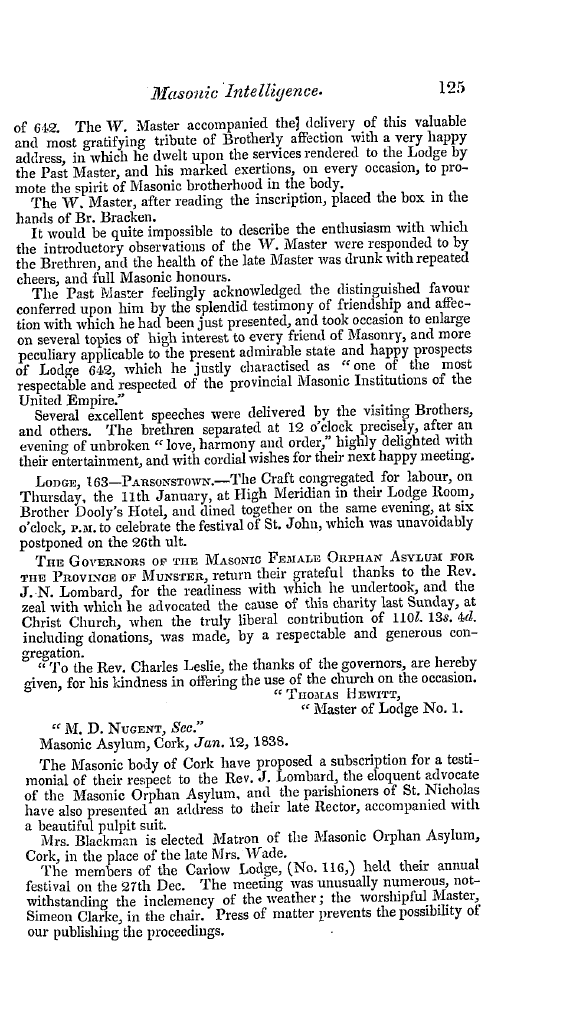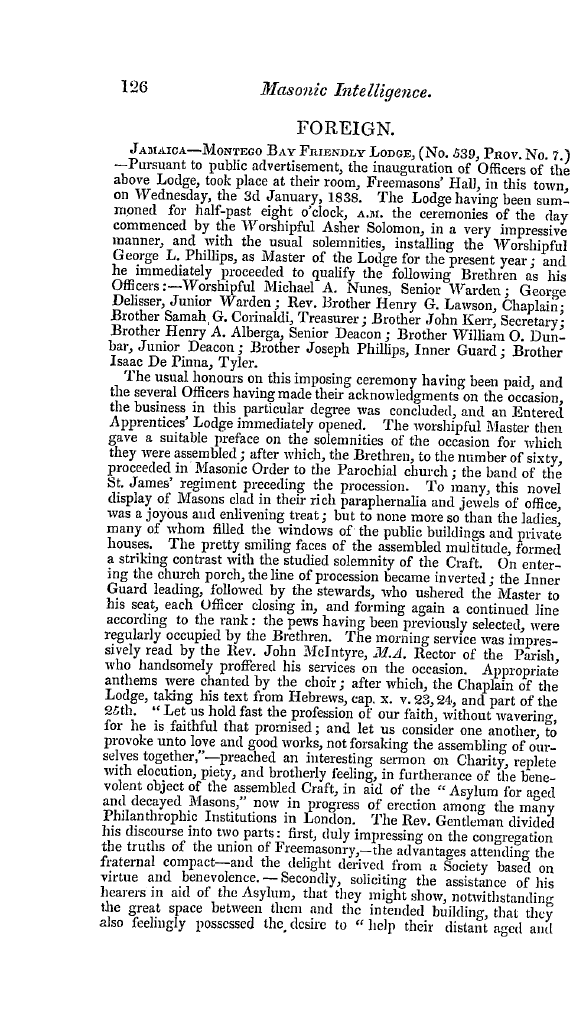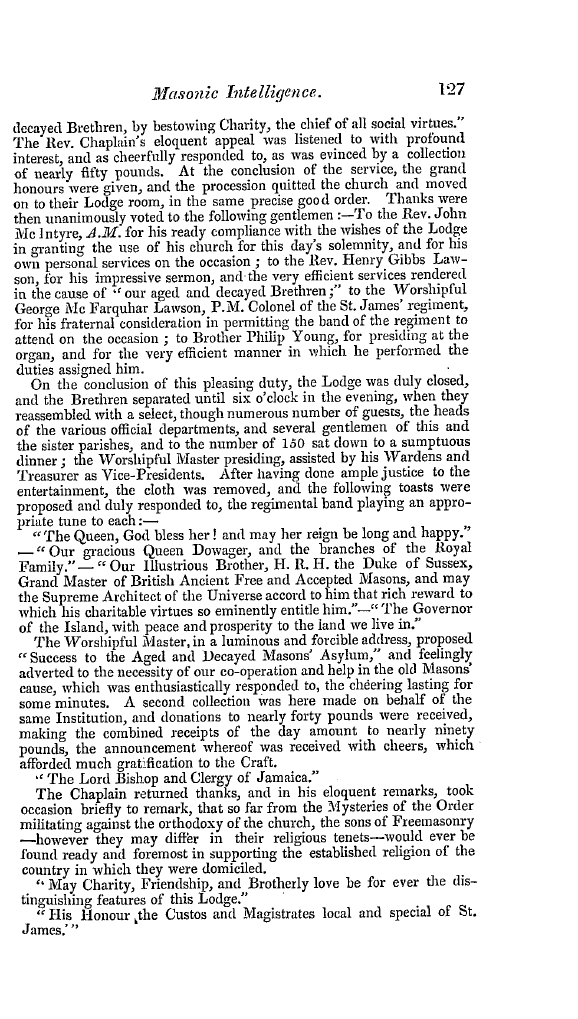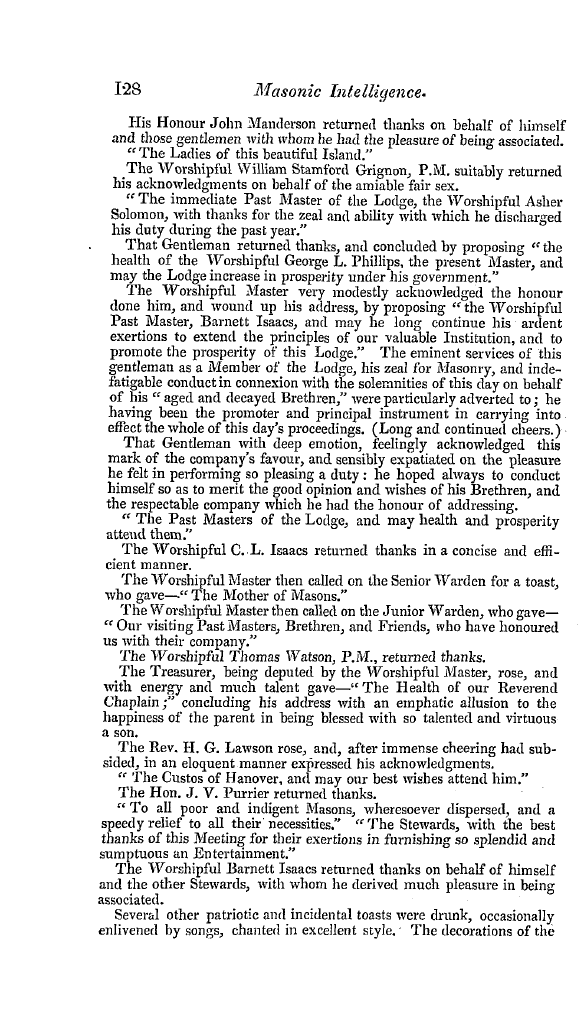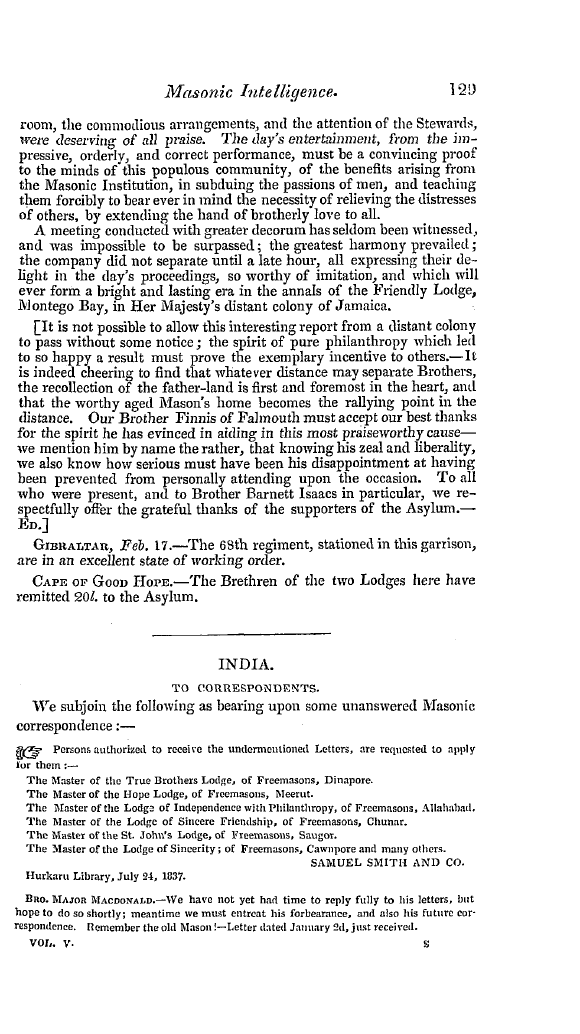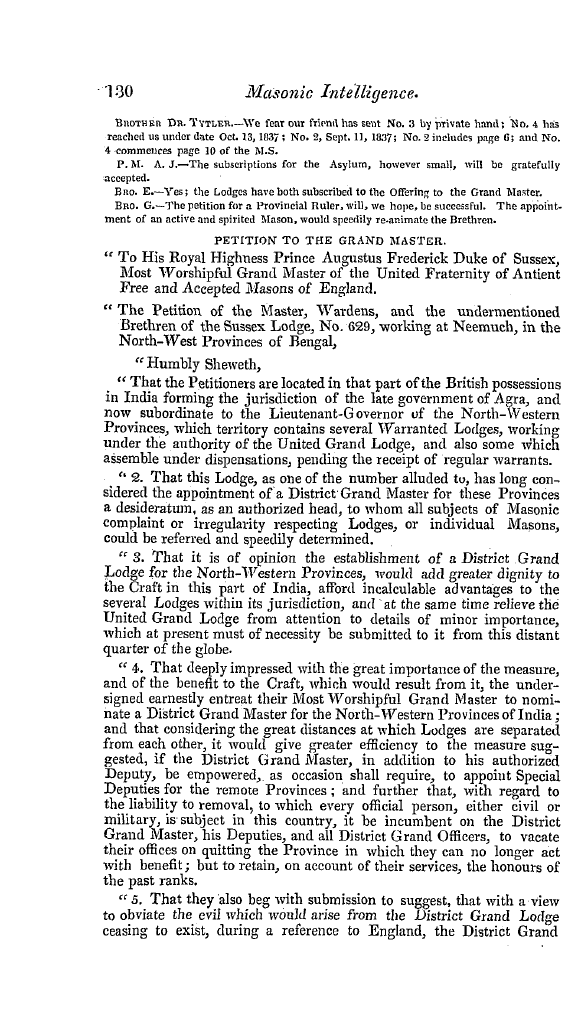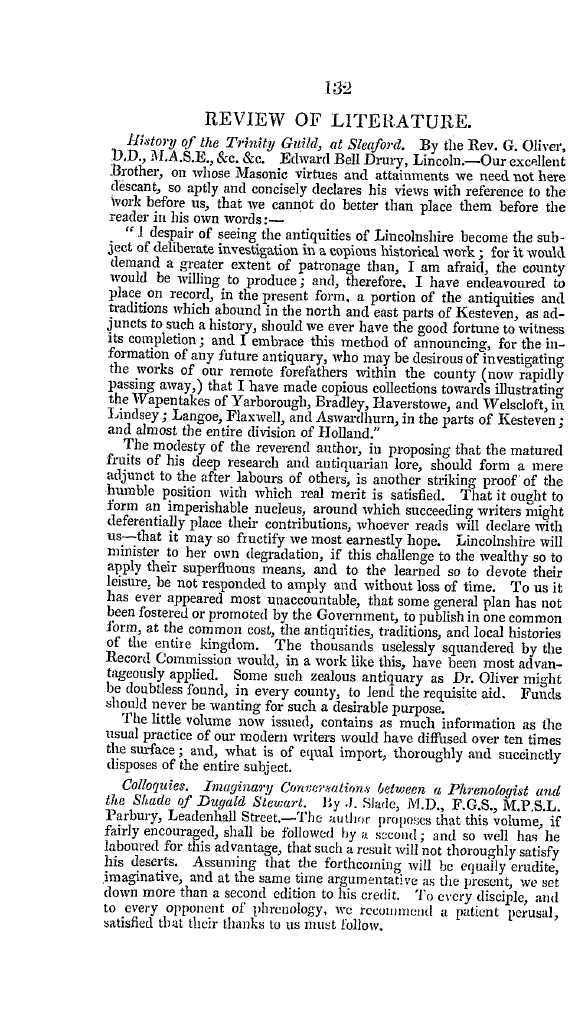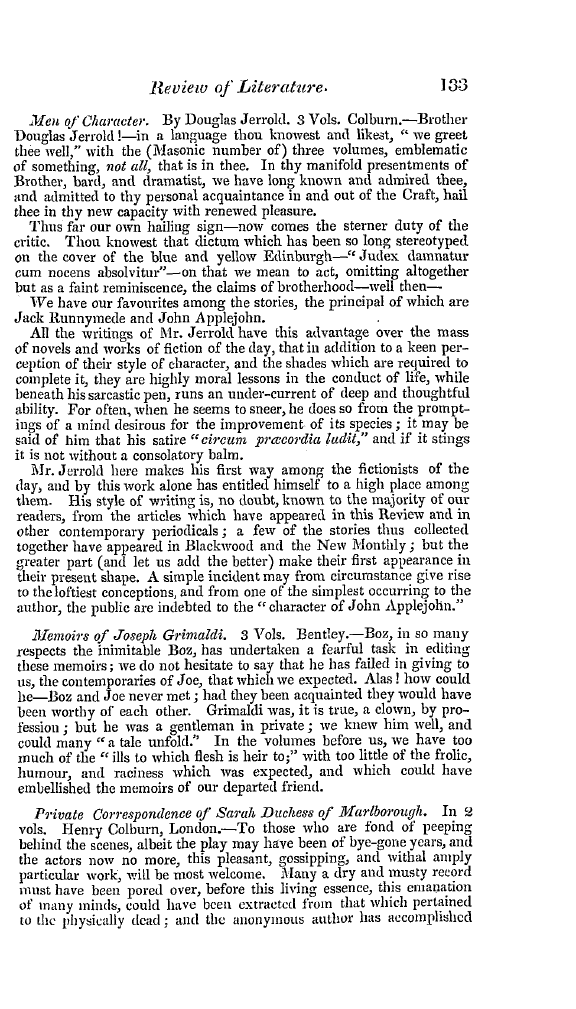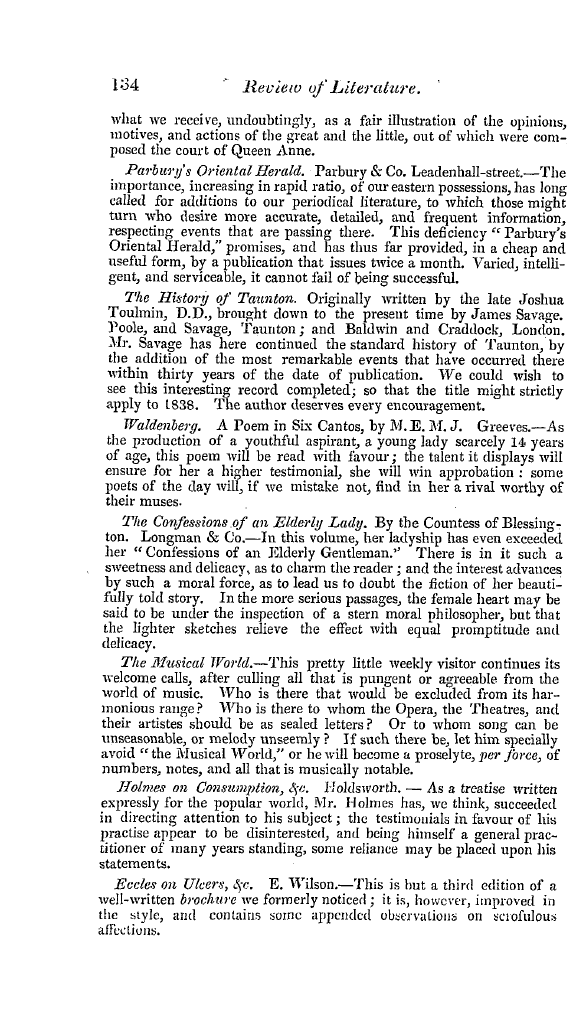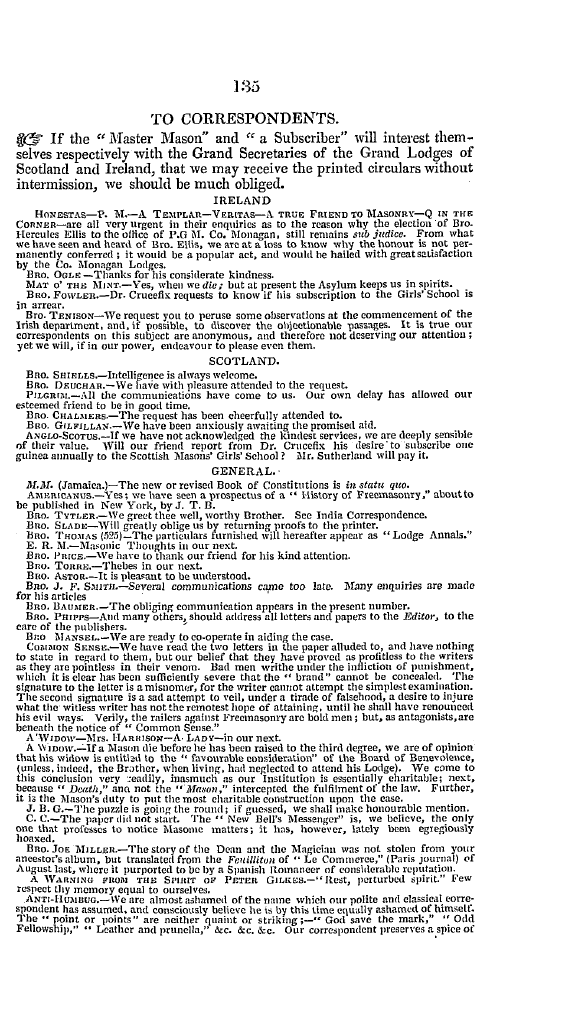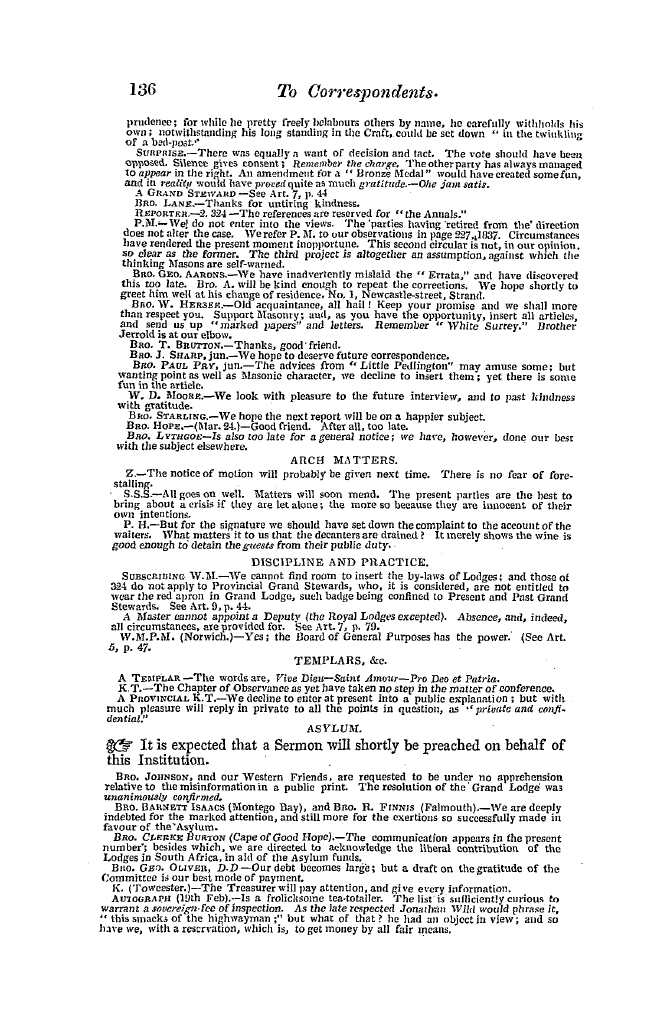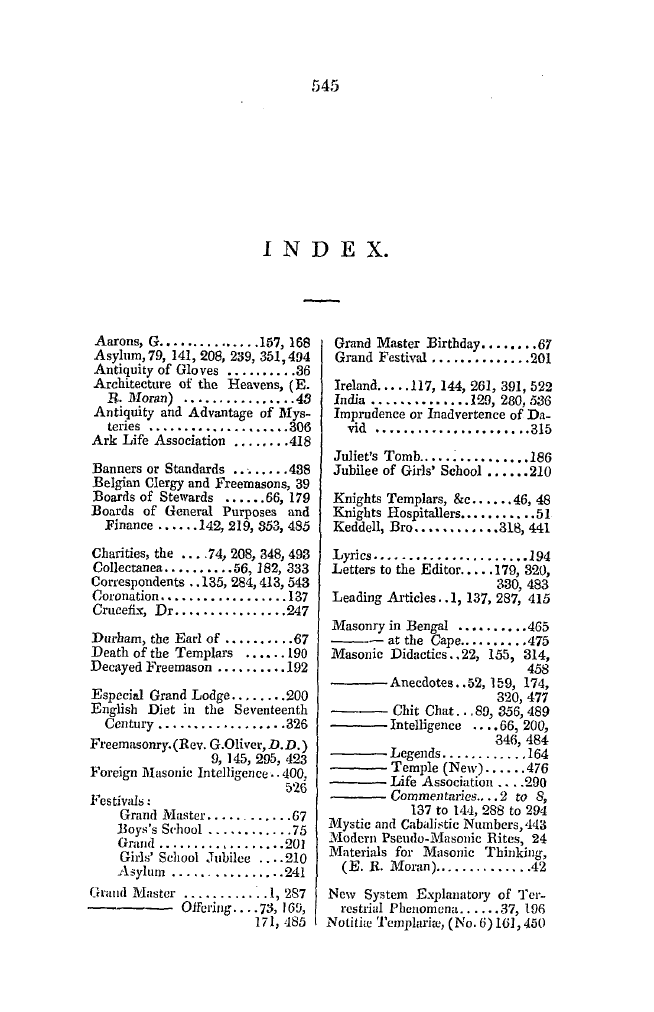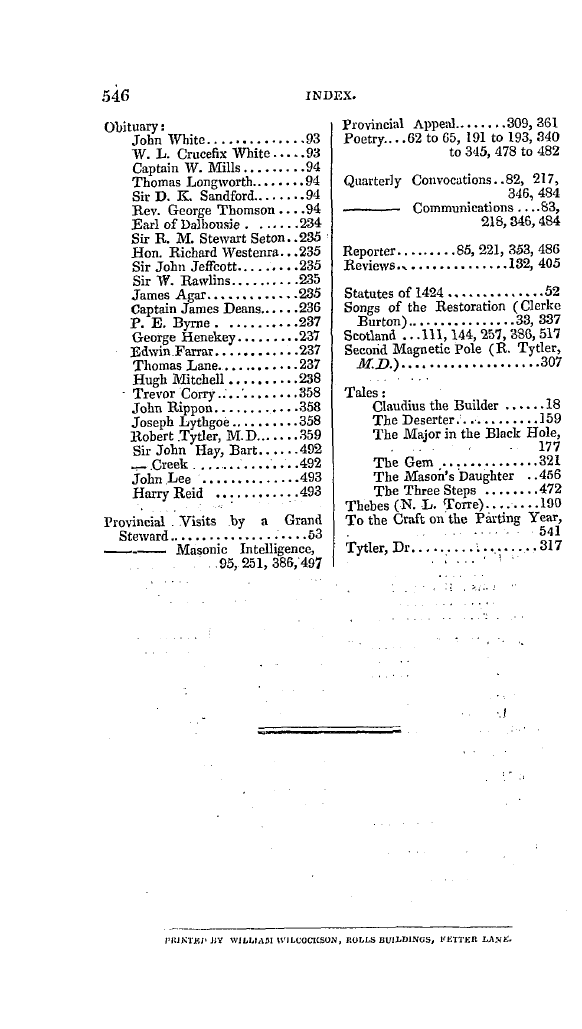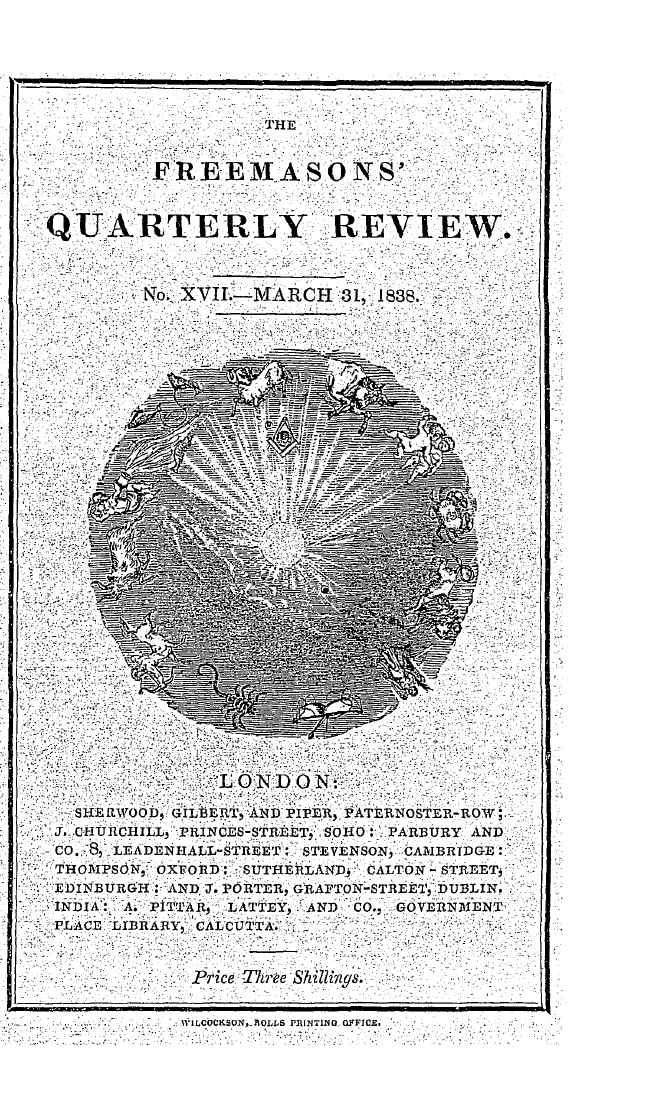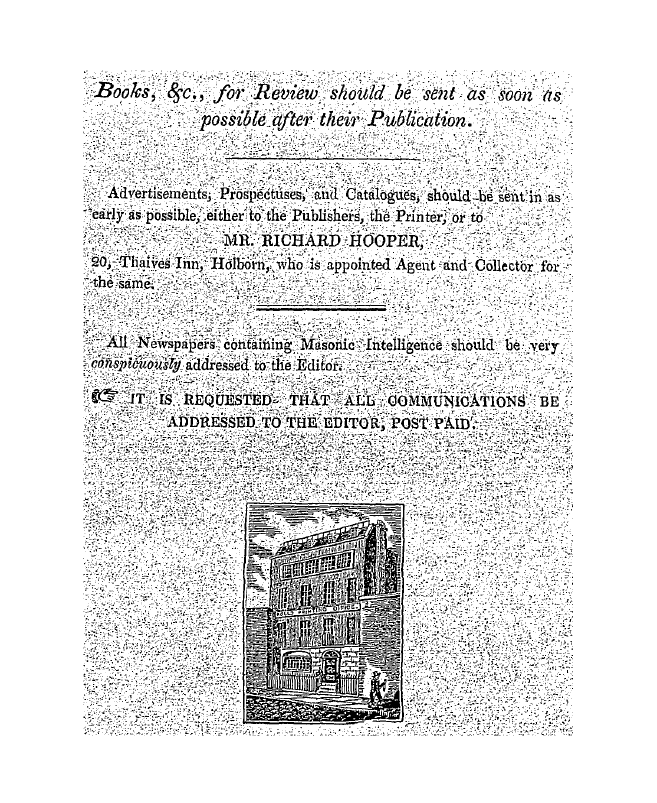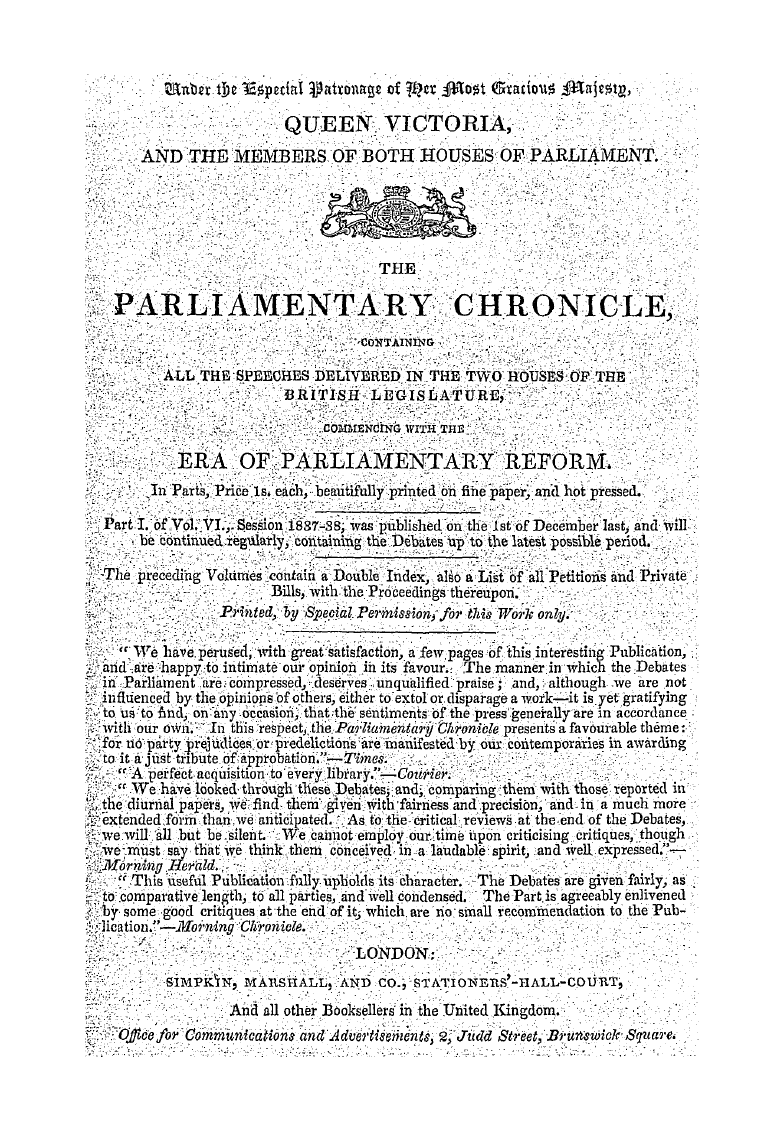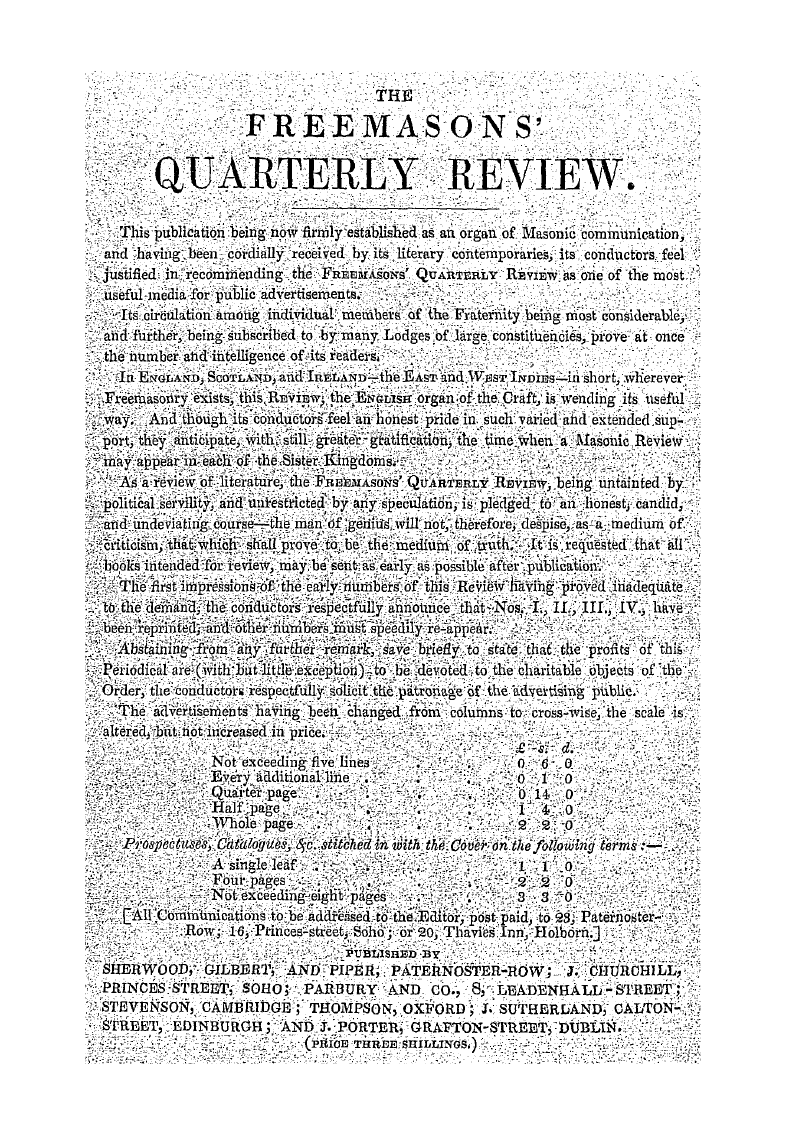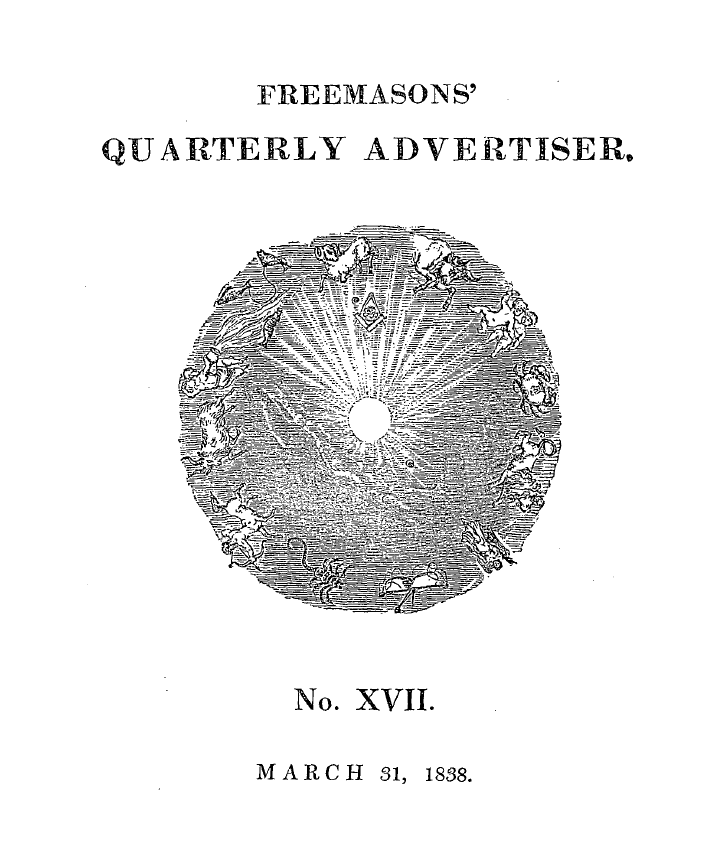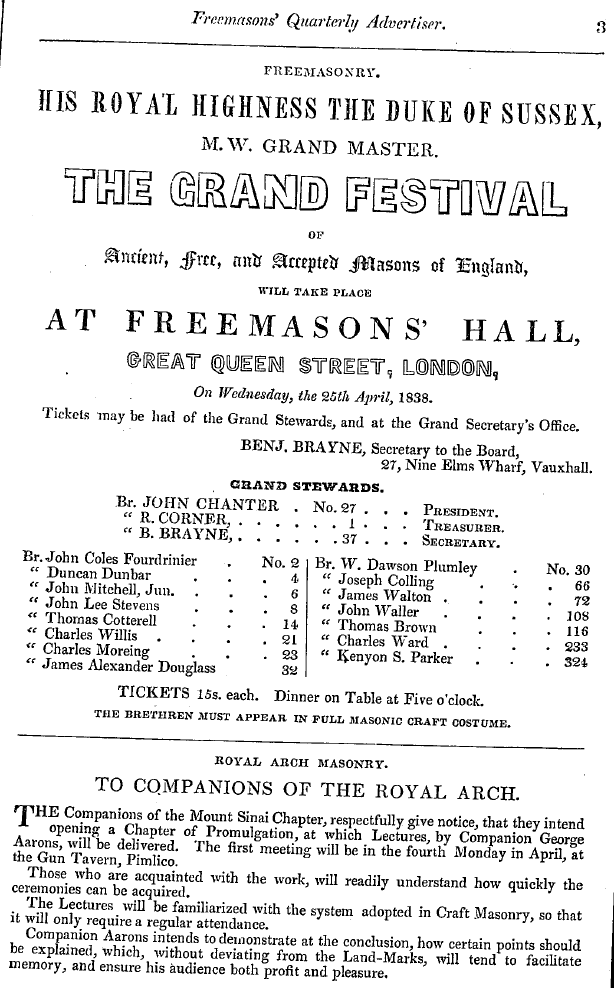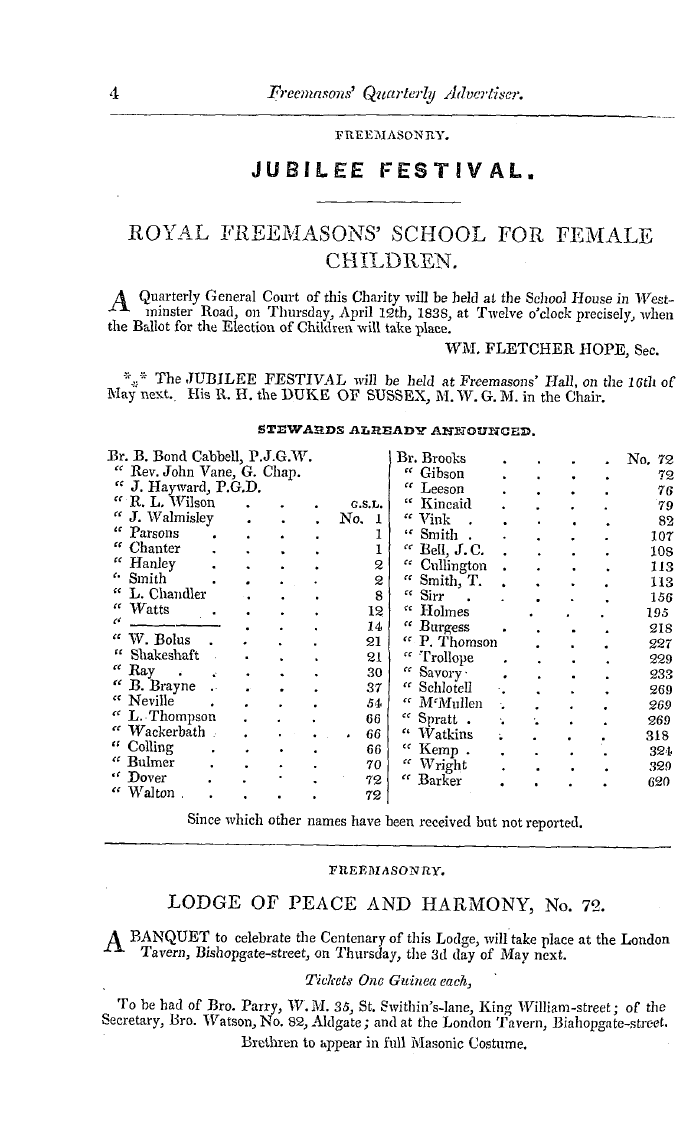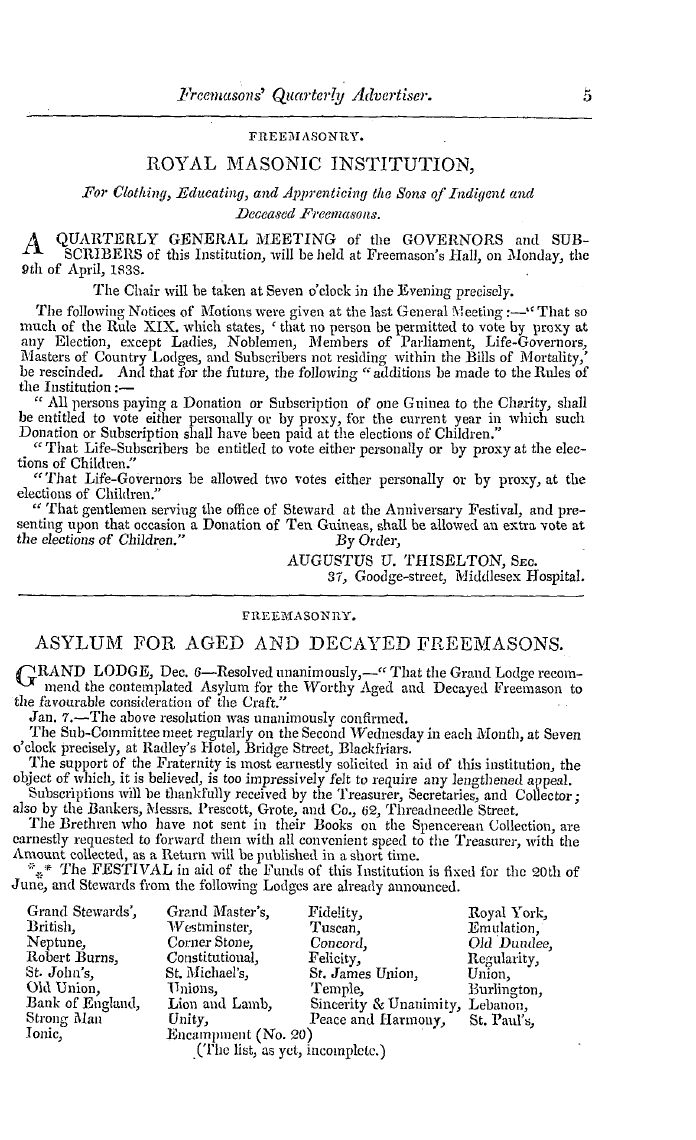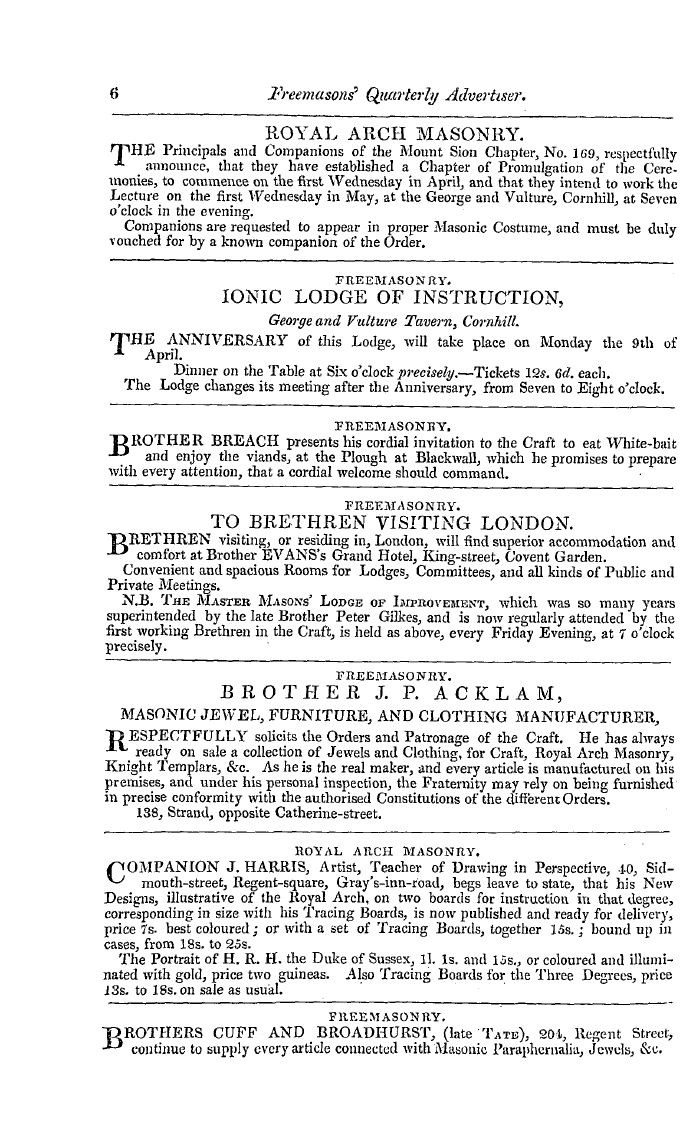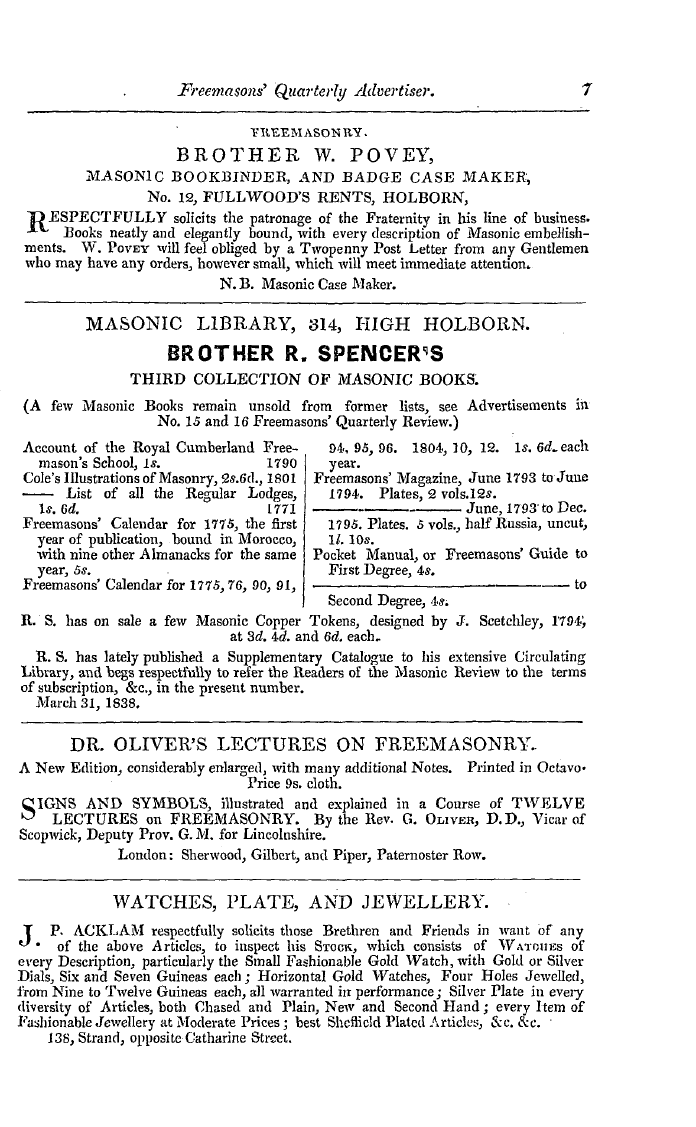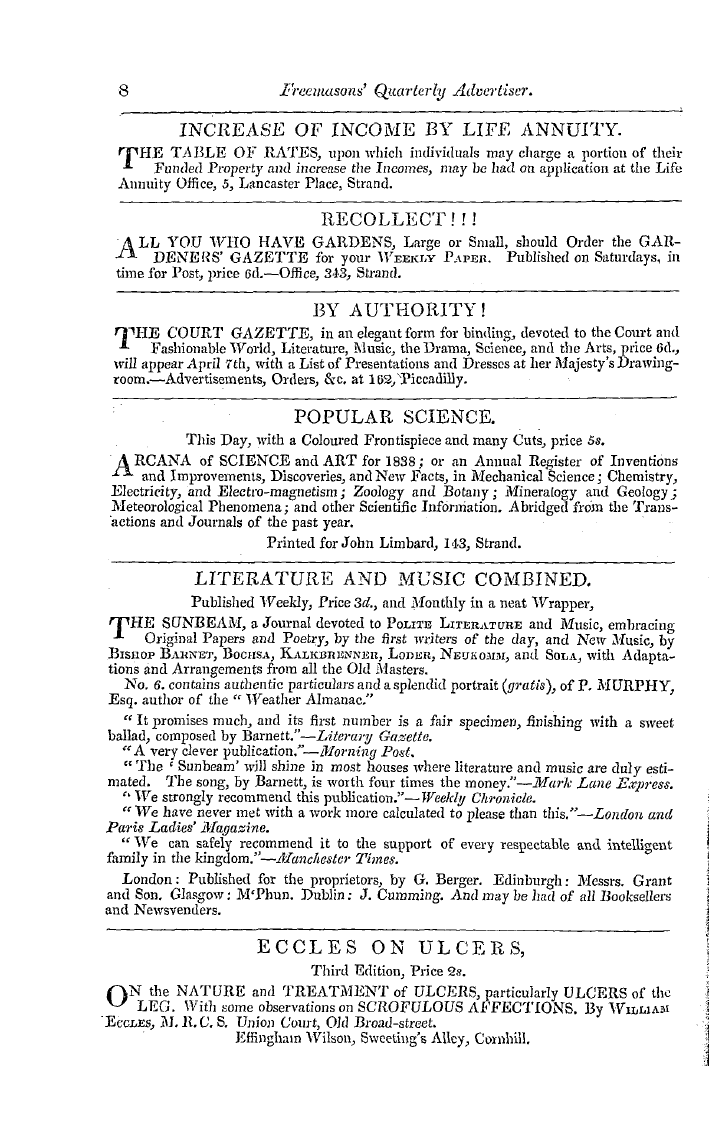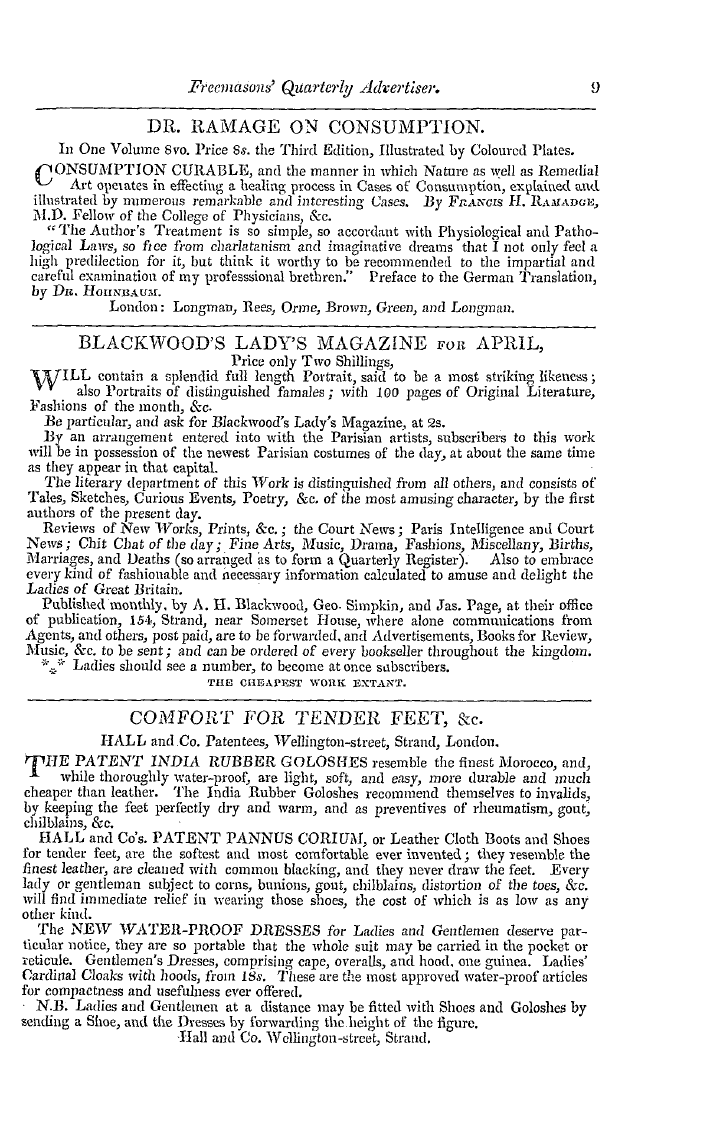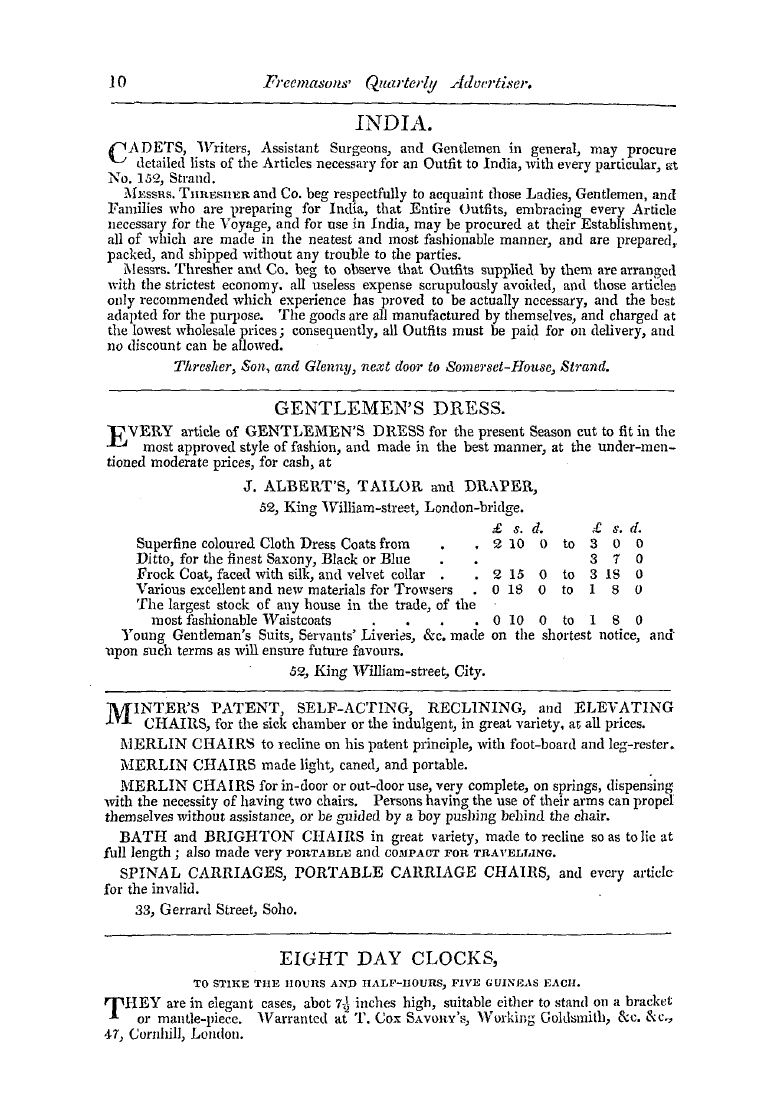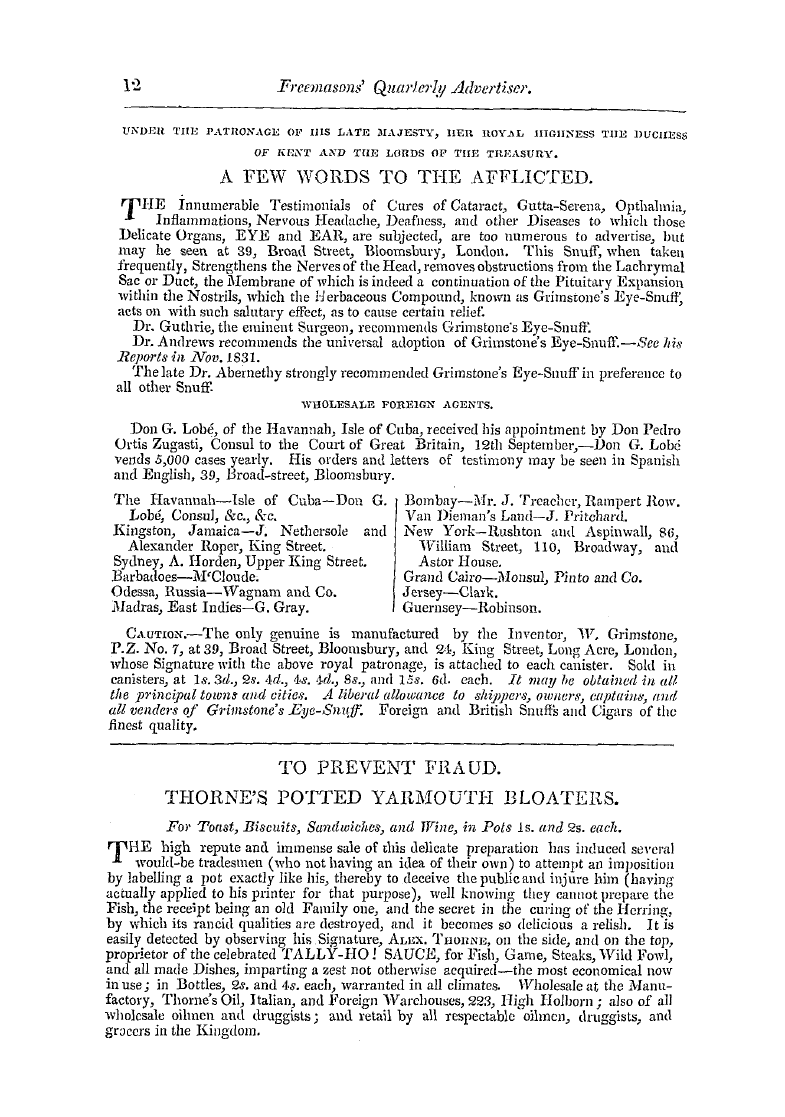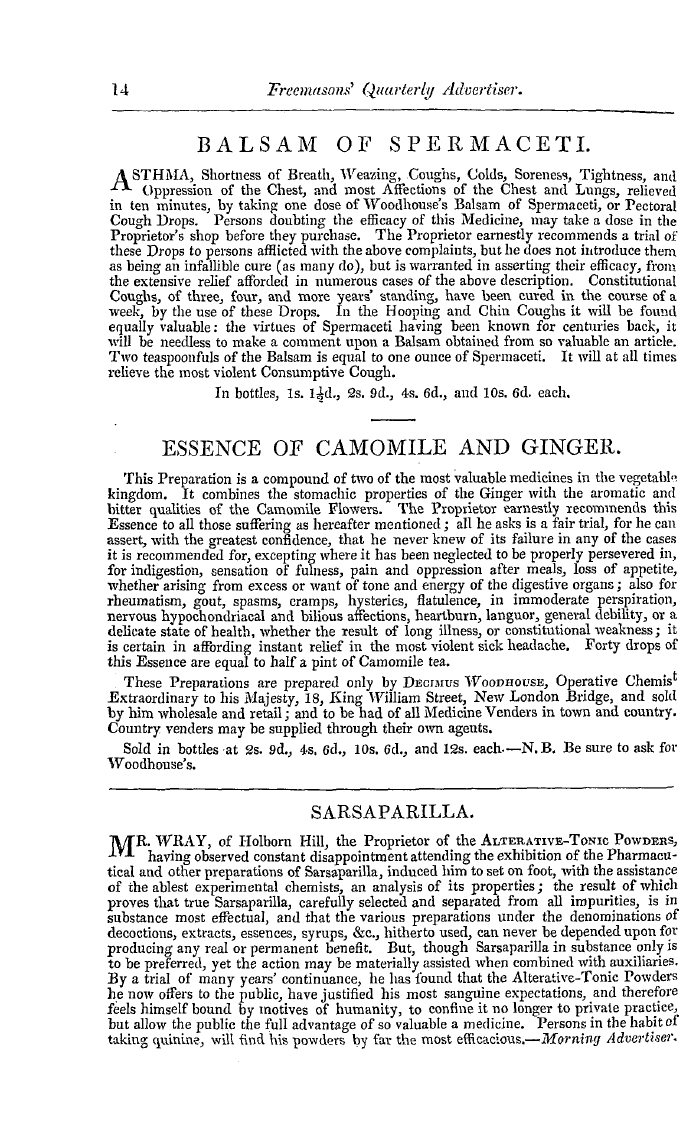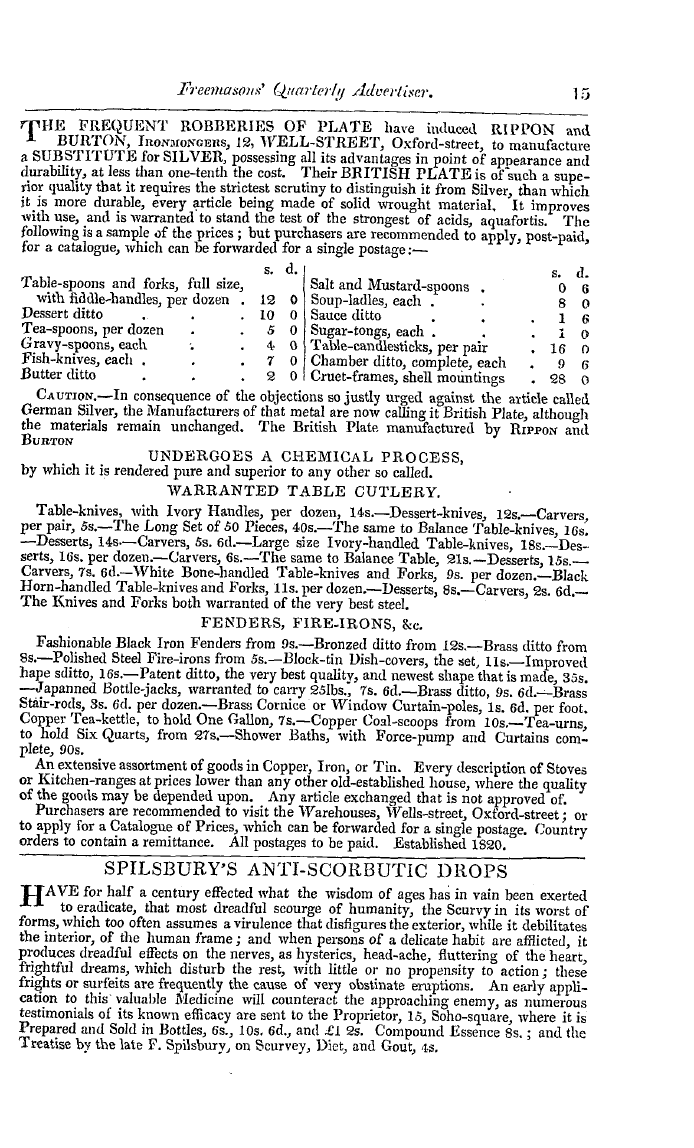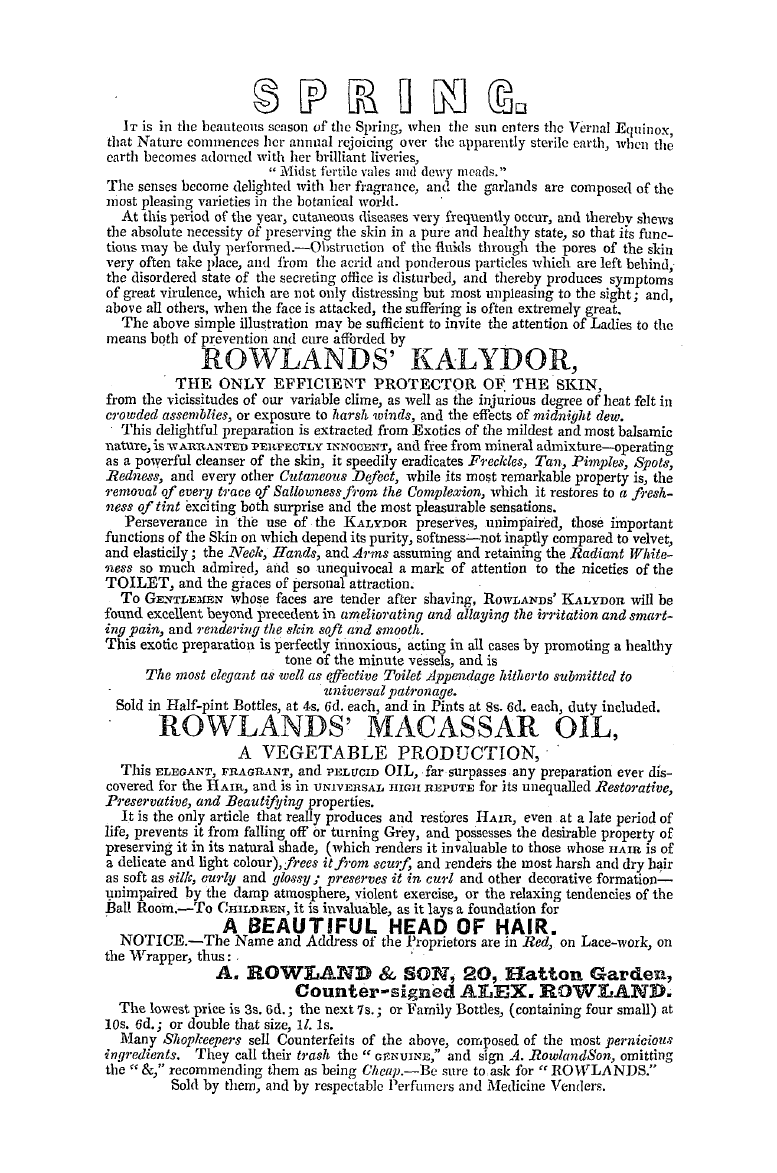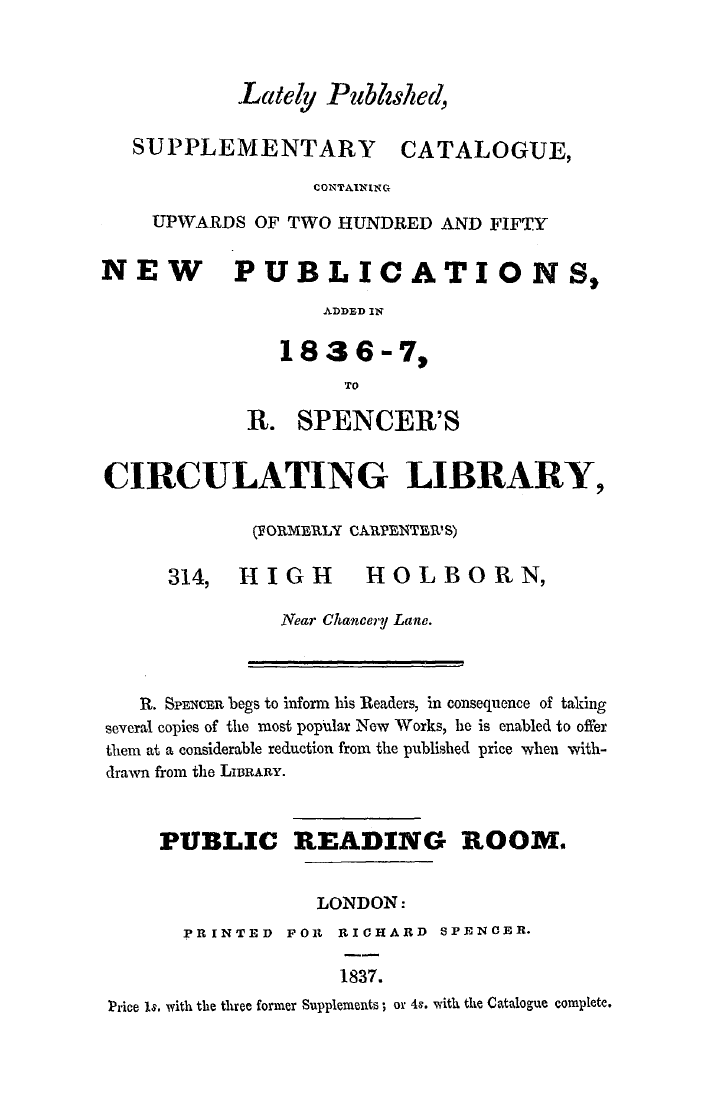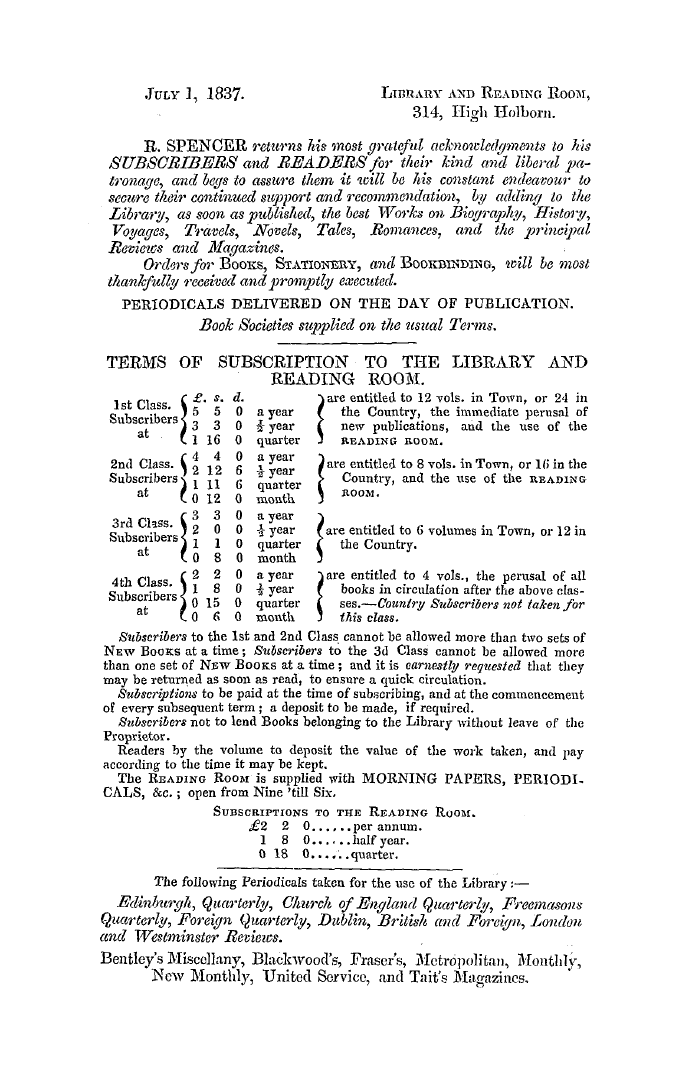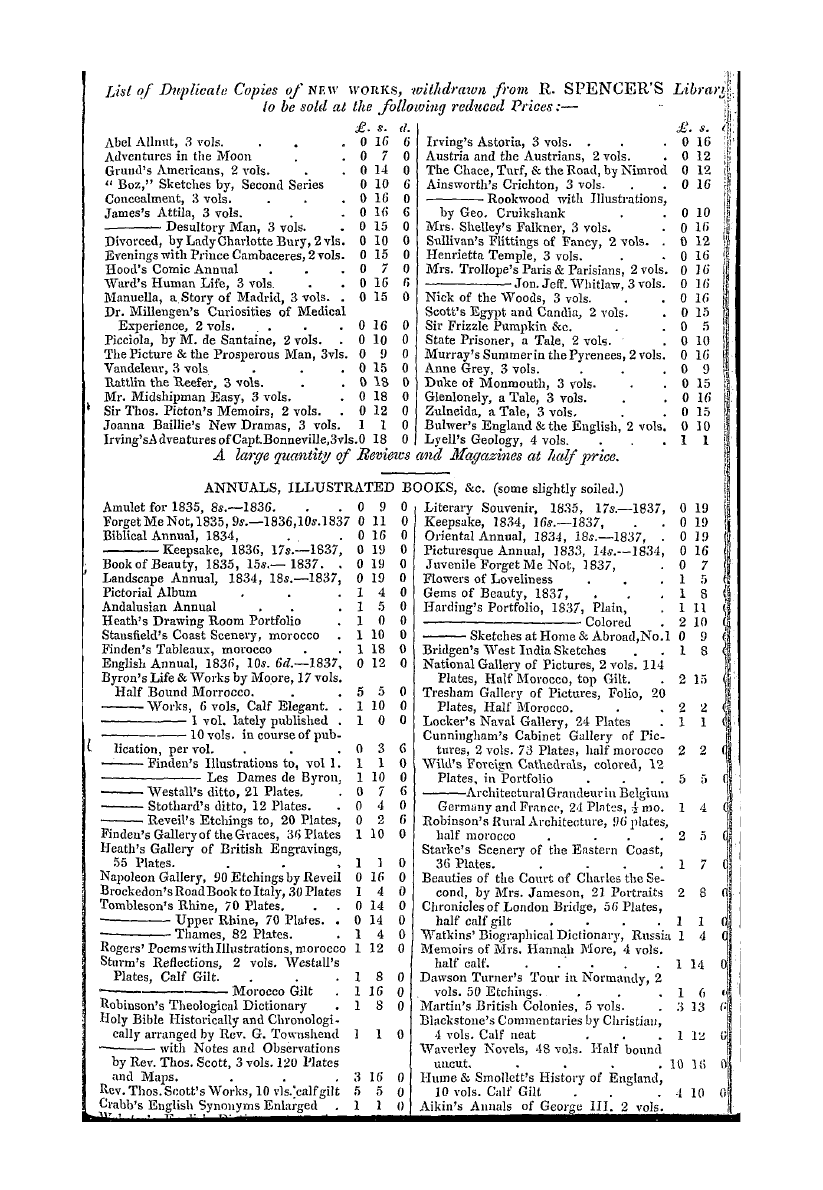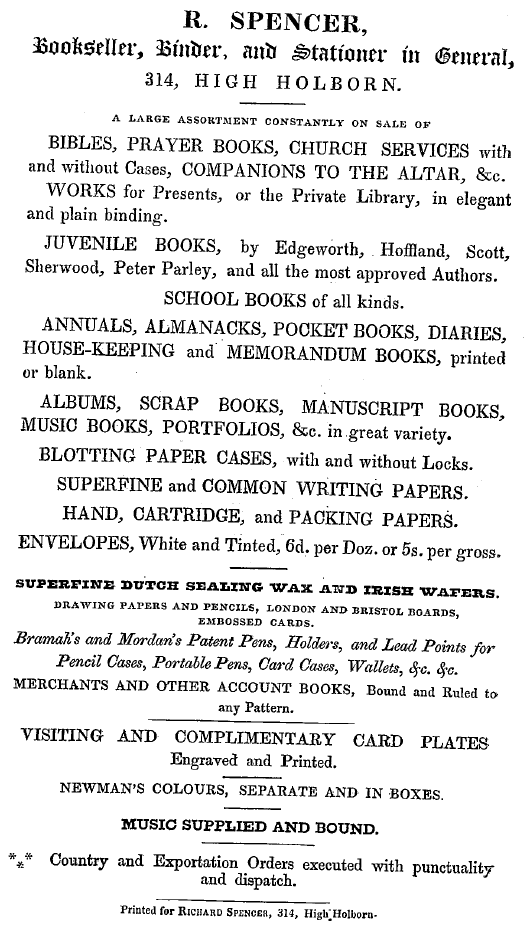-
Articles/Ads
Article COLLECTANEA. ← Page 6 of 6
Note: This text has been automatically extracted via Optical Character Recognition (OCR) software.
Collectanea.
many valuable and interesting Antiquities , and that in a short time an excellent collection might be formed , which would very greatly enhance the usefulness of the Society . " That , acknowledging the high excellence of the British Museum , both for information and amusement , and the ready access afforded to the public for either purpose , we should be most unwilling to incur the appearance of interfering with so great and useful an establishment ; butamidst the splendid and multifarious collection there preserved and
, arranged for the information of the general Antiquary , the Naturalist , the Artist , and others , we conceive that those subjects more peculiarly illustrative of the history of our country and of our national architecture , have been in a great degree neglected , and we are satisfied that the formation of a separate Museum of British Antiquities will neither injure nor interfere with the National Institution . "
I'he Patent Smoke-Consumer as applicable to Steam-boats , Locomotive Engines , and various other requirements . THAT the patent which the persevering inventors have obtained is deserving the attention of the scientific world , will be readily seen upon investigation—that those who are mainly interested think so is easily discernible in the list of engineers , surveyors , and other numerous parties connected with the important object of the inventorsMessrs . Chanter
, and Gray . We had contemplated the propriety of devoting some space to the magnificent simplicity of this invention , but finding ' it impossible , we extract from the preliminary prospectus the following remarks , which will briefly explain the more especial portion which interests the public at large . " The patents which will in part form the nucleus of this company , have been granted to John Chanter , of London , and John Gray ,
engineer to the Liverpool and Manchester Railway , for " Improvements in Furnaces for Locomotive Engines and other purposes . " It would be impossible to describe fully the nature of this invention within the limits of a prospectus , but it may be briefly stated that its principle essentially consists in so arranging the form of the furnace and position of the bars , that the fuel is regularly advanced by gravitation , upon inclined firebars , without the aid of machinery , or any apparatus besides the simple
instruments in common use for the management of furnaces ; the carbon and various inflammable gases are set free in the process of combustion , and being more charged with the oxygen of the atmosphere and heat of the fire , proceed through and over the fire , which , increasing in heat to its termination , gradually subjects the less combustible gases to perfect combustion . Saving in fuel is thus effected ; for in the present furnaces , these are not only passed off unconsumed , but by preventing the
ignition of more combustible materials , necessarily waste a large portion of the burning fuel . Thus the primary effect , in the operation of the patent furnace , may be stated to be that of obtaining , at the termination of the furnace , that intense degree of heat indispensable to the entire combustion of the various substances emitted from the burning fuel . It is needless to add , that this produces extraordinary economy of fuel . This invention is exhibited in the specification in twelve different forms , shewing itsapplication to every description of furnace . The details arc somewhat varied ; but the most important part of the principle , namely , the absolute combustion of the vapour , is thus effected in all of them . "
Note: This text has been automatically extracted via Optical Character Recognition (OCR) software.
Collectanea.
many valuable and interesting Antiquities , and that in a short time an excellent collection might be formed , which would very greatly enhance the usefulness of the Society . " That , acknowledging the high excellence of the British Museum , both for information and amusement , and the ready access afforded to the public for either purpose , we should be most unwilling to incur the appearance of interfering with so great and useful an establishment ; butamidst the splendid and multifarious collection there preserved and
, arranged for the information of the general Antiquary , the Naturalist , the Artist , and others , we conceive that those subjects more peculiarly illustrative of the history of our country and of our national architecture , have been in a great degree neglected , and we are satisfied that the formation of a separate Museum of British Antiquities will neither injure nor interfere with the National Institution . "
I'he Patent Smoke-Consumer as applicable to Steam-boats , Locomotive Engines , and various other requirements . THAT the patent which the persevering inventors have obtained is deserving the attention of the scientific world , will be readily seen upon investigation—that those who are mainly interested think so is easily discernible in the list of engineers , surveyors , and other numerous parties connected with the important object of the inventorsMessrs . Chanter
, and Gray . We had contemplated the propriety of devoting some space to the magnificent simplicity of this invention , but finding ' it impossible , we extract from the preliminary prospectus the following remarks , which will briefly explain the more especial portion which interests the public at large . " The patents which will in part form the nucleus of this company , have been granted to John Chanter , of London , and John Gray ,
engineer to the Liverpool and Manchester Railway , for " Improvements in Furnaces for Locomotive Engines and other purposes . " It would be impossible to describe fully the nature of this invention within the limits of a prospectus , but it may be briefly stated that its principle essentially consists in so arranging the form of the furnace and position of the bars , that the fuel is regularly advanced by gravitation , upon inclined firebars , without the aid of machinery , or any apparatus besides the simple
instruments in common use for the management of furnaces ; the carbon and various inflammable gases are set free in the process of combustion , and being more charged with the oxygen of the atmosphere and heat of the fire , proceed through and over the fire , which , increasing in heat to its termination , gradually subjects the less combustible gases to perfect combustion . Saving in fuel is thus effected ; for in the present furnaces , these are not only passed off unconsumed , but by preventing the
ignition of more combustible materials , necessarily waste a large portion of the burning fuel . Thus the primary effect , in the operation of the patent furnace , may be stated to be that of obtaining , at the termination of the furnace , that intense degree of heat indispensable to the entire combustion of the various substances emitted from the burning fuel . It is needless to add , that this produces extraordinary economy of fuel . This invention is exhibited in the specification in twelve different forms , shewing itsapplication to every description of furnace . The details arc somewhat varied ; but the most important part of the principle , namely , the absolute combustion of the vapour , is thus effected in all of them . "































































